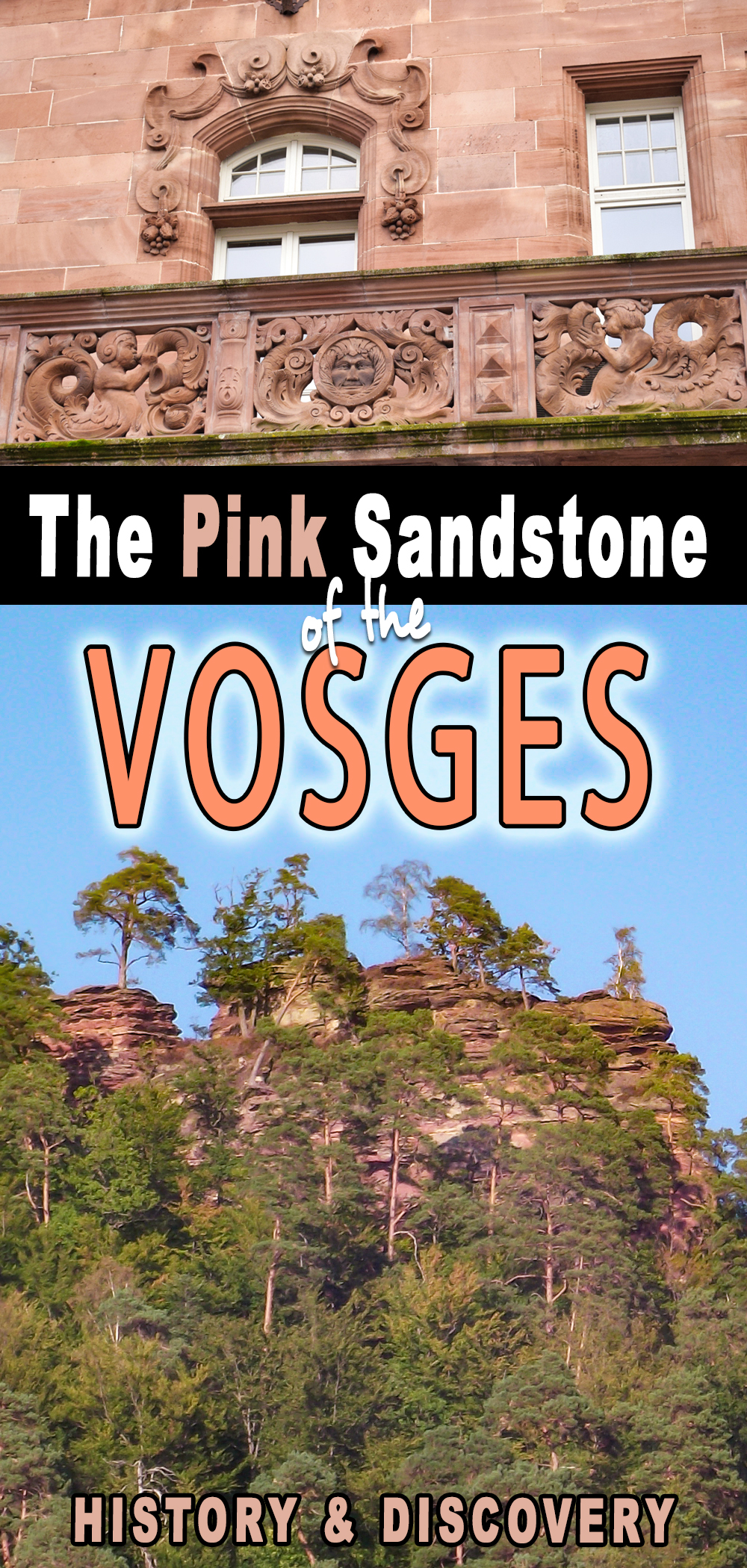Do you know what Strasbourg Cathedral, the Lion of Belfort, Haut-Kœnigsbourg Castle, the Main Post Office in Metz and the Imperial Cathedral in Speyer have in common? Vosges sandstone!
An emblematic material of Alsace and the Upper Rhineland, pink sandstone can be found in the landscapes of the Northern Vosges and on the facades of many buildings such as the famous Strasbourg cathedral. Indeed, the pink or red colour and its very fine grain make it an admirable building stone. Let us explore the sandstone deposits and its presence on the most beautiful monuments in Alsace and elsewhere!
What is sandstone or Buntsandstein?
According to Wikipedia, sandstone is a detrital sedimentary rock, resulting from the aggregation of mainly sandy grains (0.063 mm to 2 mm) and consolidated during diagenesis.
The grains constituting the sandstone are derived from the erosion of pre-existing rocks which largely determine its composition, mainly quartz and feldspar.
In German, Vosges sandstone is known as Buntsandstein, which means coloured sandstone (bunter Sandstein). As early as 1835, the term was translated into French as grès bigarré or Lower Trias.
The etymology explains everything!
The word sandstone derives from the Low Latin gressius, gresum, the High German griez, grioz, and the modern German gries, which means “sand, gravel”.
Thus, the unconsolidated equivalent of sandstone is called… sand! (sable in French)
The pink Vosges sandstone
Thanks to their contrasting geological configurations, Alsace and Lorraine have a wide variety of materials. These include granite, schist, limestone (Euville stone) and clay.
All these materials have long been used in construction.
However, Alsace has made use of a material that is characteristic of the region: Vosges sandstone, in French, grès des Vosges.
- Pink sandstone is found in the Vosges, especially north of Barr. It is mainly a characteristic stone of the northern Vosges. You can easily recognize it on picturesque rocks and in ruined castles.
- However, some deposits of pink sandstone appear in the Haut-Rhin département, notably on the sub-Vosgian hills between Guebwiller and Colmar, in the Munster valley and east of Ribeauvillé.
- On the Lorraine side, in the Vosges department, pink sandstone outcrops between Epinal and Saint-Dié-des-Vosges.
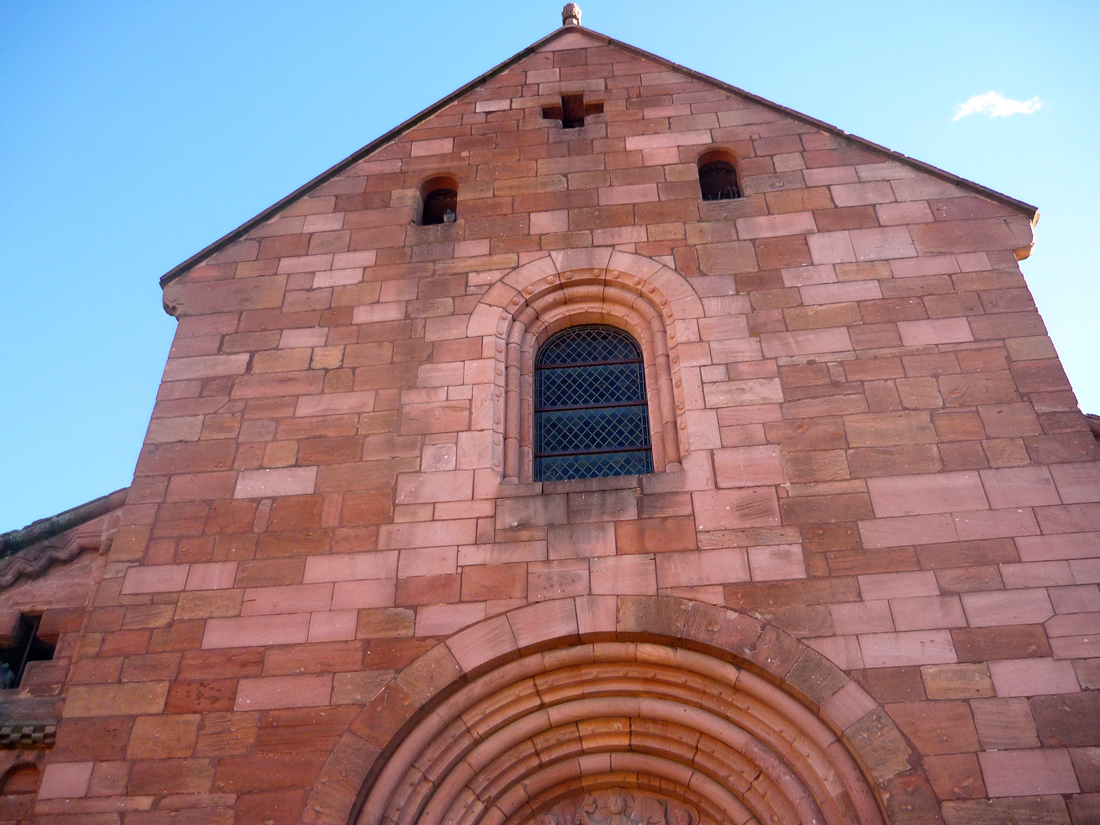
The Two Vosges!
The Vosges are usually divided into two parts:
- The crystalline Vosges (les Vosges cristallines) are mostly made of granite. These are the Hautes-Vosges whose rounded peaks are often called “ballons“.
- The sandstone Vosges (les Vosges gréseuses), north of the Bruche Valley. This is the domain of the pink Vosges sandstone, with a very fine grain. Erosion has done its work to give them shapes that are often unexpected, but always picturesque (rocky bars and peaks). Since ancient times, man has used these natural foundations to build fortresses whose walls are one with the rock.
The Northern Vosges sandstone
The landscapes of the Northern Vosges (Vosges du Nord) are characterised by the presence of rocky bars near the summits. Here, the sandstone favours the emergence of abrupt reliefs and rocky spurs and outcrops.
The soils are acidic, sandy, filtering and dry, forcing the vegetation to adapt. Thus, only the Scots pine and a few deciduous trees such as the sessile oak grow.
![Typical landscape of the Northern Vosges © Jessie Emslie - licence [CC BY-SA 2.0] from Wikimedia Commons](https://frenchmoments.eu/wp-content/uploads/2022/04/Château-de-Loewenstein-©-Jessie-Emslie-licence-CC-BY-SA-2.0-from-Wikimedia-Commons.jpg)
Sandstone outcrops can be found along the valley floor roads or in the form of blocks emerging from the summits. These small cliffs reveal the surprising pinkish colour of the subsoil. They give a “mountain” appearance to the Northern Vosges whose highest peaks do not exceed 600 metres.
When the ruins of castles merge with the rock
The great tourist monuments of the Northern Vosges were built in pink sandstone. The picturesque ruins of the castles on the rocky escarpments contribute to the postcard image of the region.
The colours of the sandstone stones and the protrusions of the ruined walls have attracted tourists since the 19th century. To discover: the castles of Fleckenstein, Falkenstein, Hohenbourg, Lichtenberg, Lutzelhardt, Windstein.
![Vosges Sandstone - Lichtenberg castle © Getüm - licence [CC BY-SA 2.0 de] from Wikimedia Commons](https://frenchmoments.eu/wp-content/uploads/2022/04/Chateau-Lichtenberg-©-Getüm-licence-CC-BY-SA-2.0-de-from-Wikimedia-Commons.jpg)
![Falkenstein Castle © Motherly - licence [CC BY-SA 3.0] from Wikimedia Commons](https://frenchmoments.eu/wp-content/uploads/2022/04/Falkenstein-Moselle-©-Motherly-licence-CC-BY-SA-3.0-from-Wikimedia-Commons.jpg)
Also worth seeing is the site of Graufthal. The famous whitewashed troglodyte houses of the hamlet are dominated by a huge sandstone escarpment, like a gigantic bastion.
![The troglodyte houses of Graufthal © Ralph Hammann - licence [CC BY-SA 4.0] from Wikimedia Commons](https://frenchmoments.eu/wp-content/uploads/2022/04/Graufthal-©-Ralph-Hammann-licence-CC-BY-SA-4.0-from-Wikimedia-Commons-scaled.jpg)
Sandstone in the Palatinate
The Northern Vosges does not stop at the French-German border by magic!
The massif extends into Germany under the name of Pfälzerwald (in French: forêt palatine). The cross-border massif forms the Vosges du Nord-Pfälzerwald biosphere reserve, recognised by UNESCO in 1998.
![Map of the Vosges du Nord - Pfälzerwald biosphere © GH-NC - licence [CC BY-SA 4.0] from Wikimedia Commons](https://frenchmoments.eu/wp-content/uploads/2022/04/Carte-de-la-biosphere-Vosges-du-Nord-Pfalzerwald-©-GH-NC-licence-CC-BY-SA-4.0-from-Wikimedia-Commons.jpg)
Unsurprisingly, the geological composition of the Pfälzerwald is identical to that of the Northern Vosges, namely the presence of pink sandstone (in German: Buntsandstein). This explains the importance of the forest cover in both territories, dominated by three species: Scots pine, beech and sessile oak.
Some places of interest in the Palatinate Forest:
The Dahn region
The rock formations of the Dahner Felsenland (Dahn region) are very popular with tourists and hikers:
- the famous Teufelstisch (Devil’s Table) near Hinterweidenthal, a kind of rocky mushroom 14 metres high,
- the Jungfernsprung,
- the Hochstein,
- the two rock towers Braut and Brautigam and
- the rocky reef of Lammerfelsen
- the Altschlossfelsen near the French-German border
![The famous Teufelstisch rock © Frédéric Haag - licence [CC BY-SA 4.0] from Wikimedia Commons](https://frenchmoments.eu/wp-content/uploads/2022/04/Teufelstisch-2-copyright-Frédéric-Haag-licence-CC-BY-SA-4.0-from-Wikimedia-Commons.jpg)
![The Jungfernsprung rocks © Rüdiger - licence [CC BY-SA 3.0] from Wikimedia Commons](https://frenchmoments.eu/wp-content/uploads/2022/04/Jungfernsprung-©-Rüdiger-licence-CC-BY-SA-3.0-from-Wikimedia-Commons.jpg)
![Altschlossfelsen © H. Zell - licence [CC BY-SA 3.0] from Wikimedia Commons](https://frenchmoments.eu/wp-content/uploads/2022/04/Altschlossfelsen-©-H.-Zell-licence-CC-BY-SA-3.0-from-Wikimedia-Commons.jpg)
In the Annweiler region
- the Asselstein,
- the Luger Friedrichsfels,
- the Hundsfels and Rödelstein near Vorderweidenthal
![The Asselstein rock in Annweiler am Trifels © Steffen 962 - licence [CC0] from Wikimedia Commons](https://frenchmoments.eu/wp-content/uploads/2022/04/Asselstein-Annweiler-am-Trifels-©-Steffen-962-licence-CC0-from-Wikimedia-Commons.jpg)
The Black Forest Sandstone
The eastern counterpart of the Vosges mountains, the Black Forest massif in Germany, also has deposits of variegated sandstone, which was used in the construction of numerous monuments on the right bank of the Rhine (Heidelberg castle, Freiburg im Breisgau cathedral, etc.).
The exploitation of Vosges sandstone
Vosges sandstone rocks (especially variegated sandstone) have been exploited since ancient times for their excellent properties.
Today, 17 Vosges quarries extract nearly 200,000 tonnes of sandstone. The stone is then shaped by 7 operators grouped together within the Union of Vosges sandstone producers.
Thanks to the easy cleavage, people have built prestigious buildings in the Upper Rhine region. These include cathedrals, churches, castles and bridges. A brief overview…
Vosges sandstone in castles and palaces
Vosges sandstone was mainly used as a building material in castles.

The ruined castles of the Northern Vosges and the Pfälzerwald (Fleckenstein in France; Trifels in Germany)
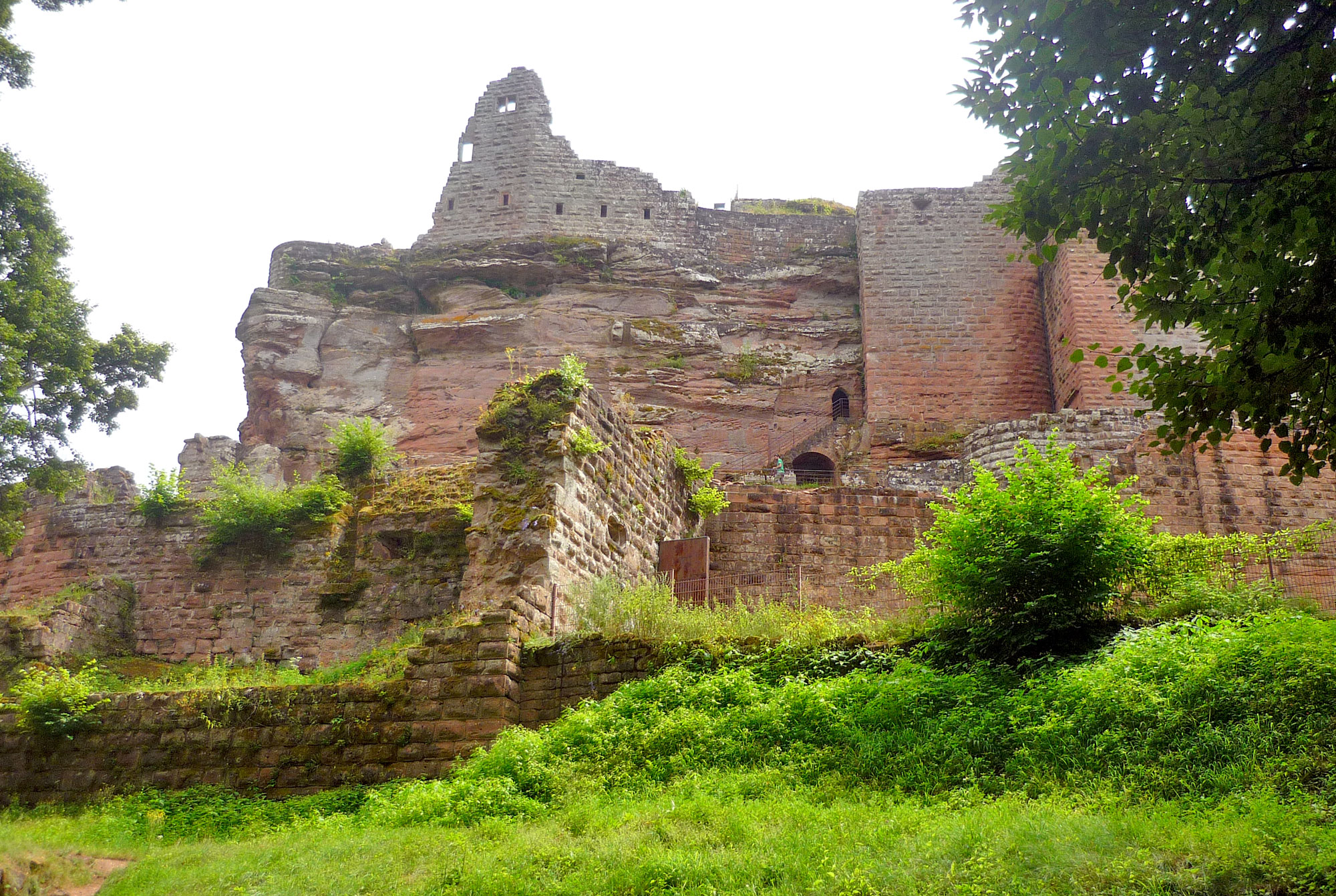
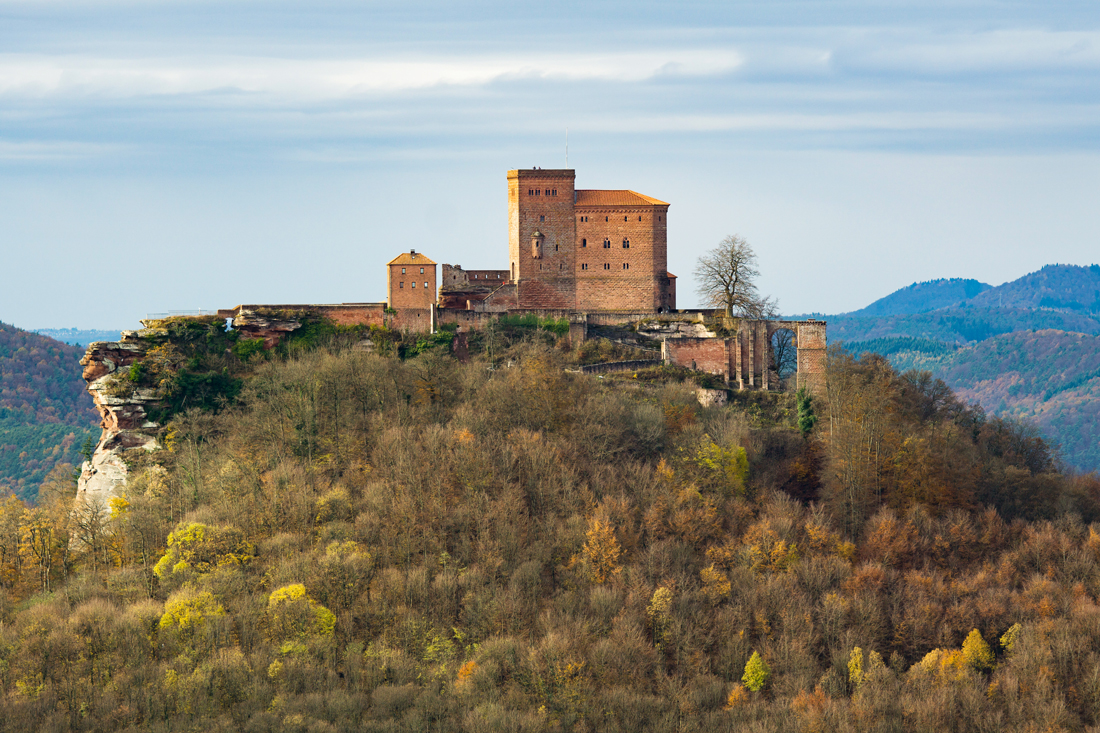
The splendid Rohan Palace in Saverne
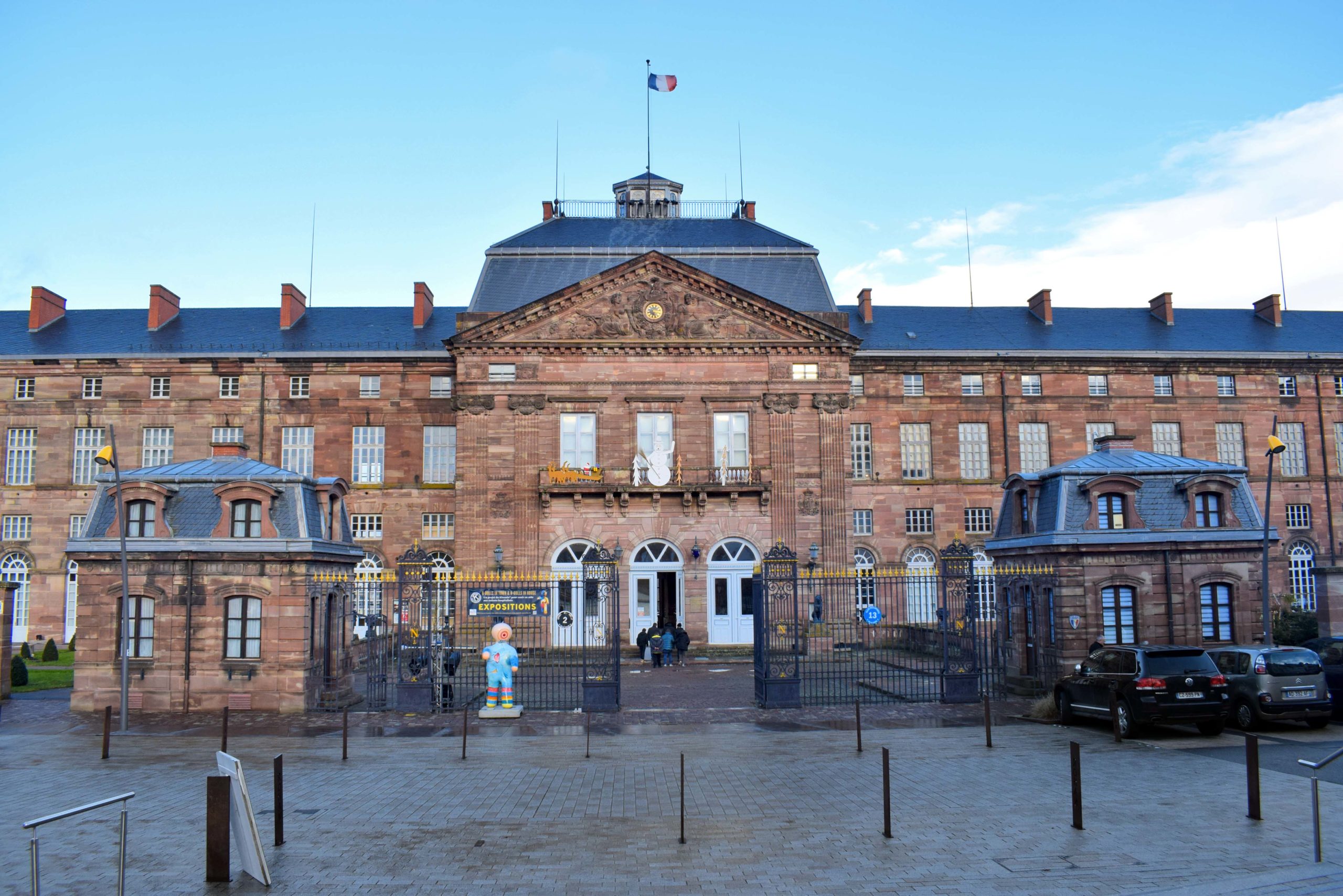
The Haut-Barr castle in Saverne
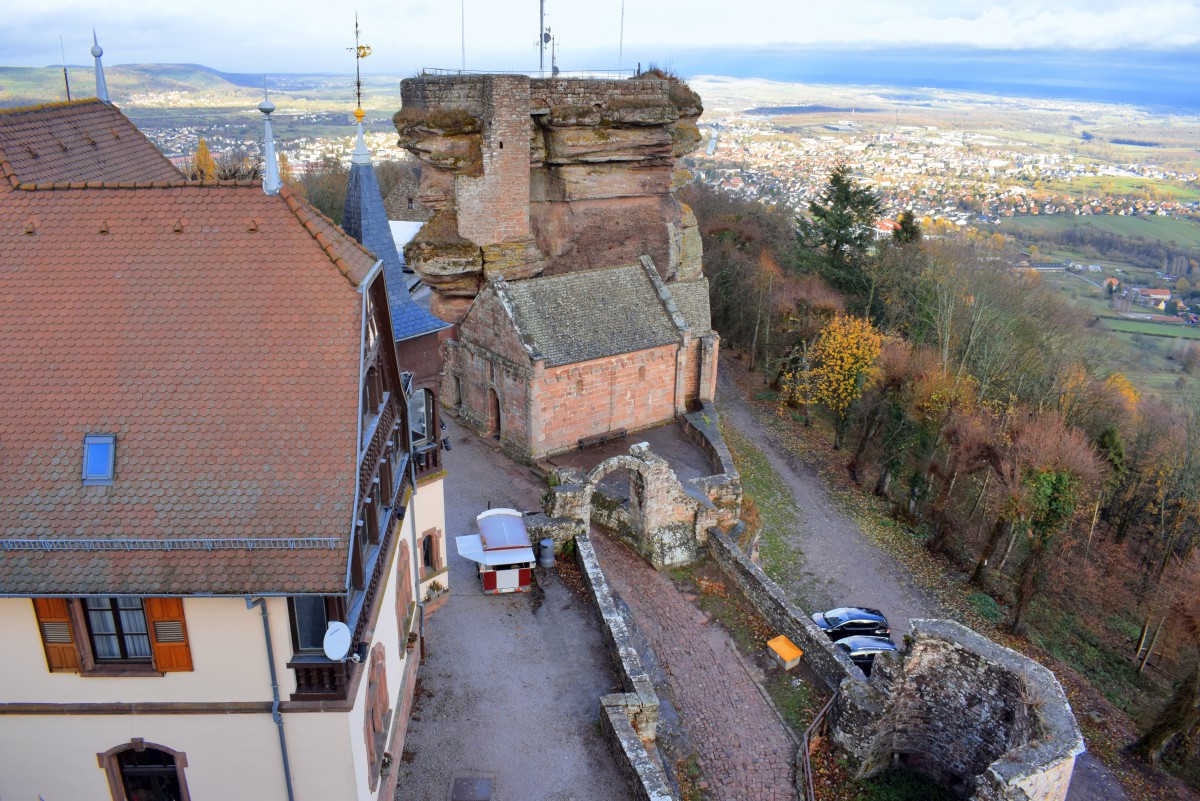
The Lutzelbourg Castle near the Saverne Pass
![Lutzelbourg castle © Gzen92 - licence [CC BY-SA 4.0] from Wikimedia Commons](https://frenchmoments.eu/wp-content/uploads/2018/06/Château-de-Lutzelbourg-©-Gzen92-licence-CC-BY-SA-4.0-from-Wikimedia-Commons.jpg)
The old castle of Epinal
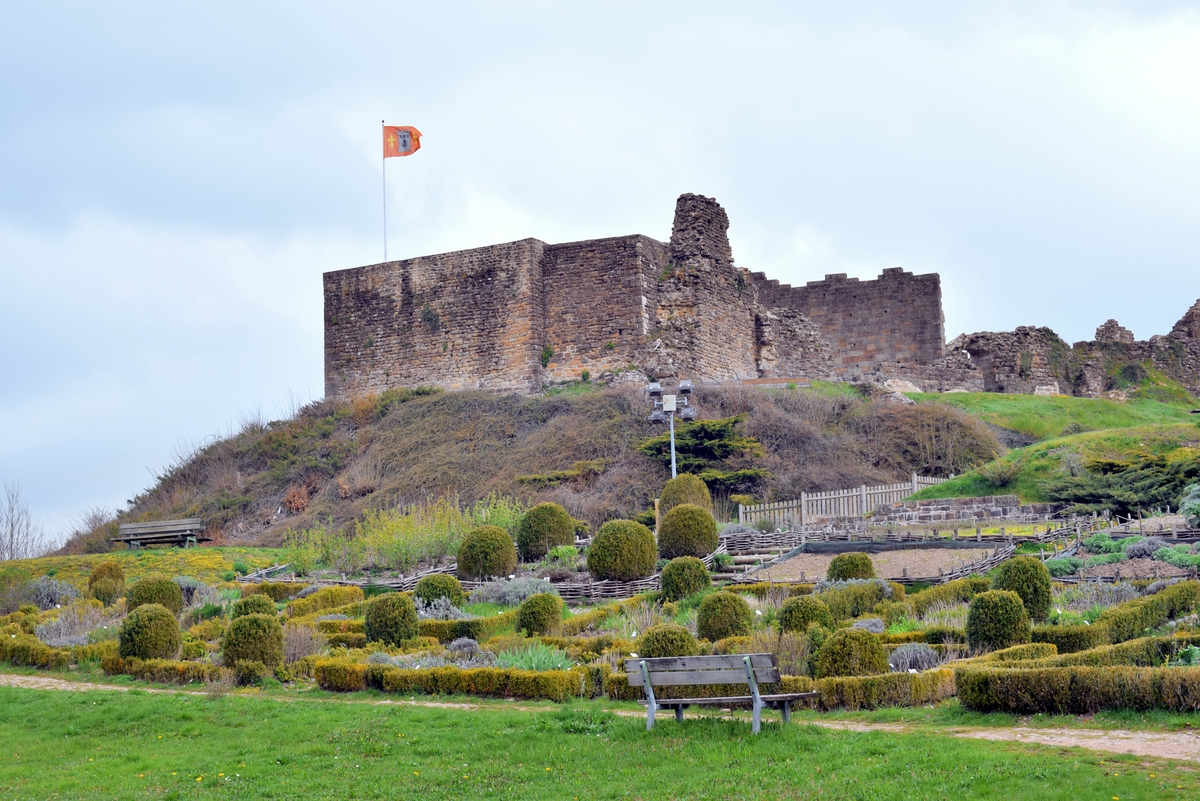
Vosges sandstone in cathedrals and churches
The pink sandstone of the Vosges can be found in many sanctuaries in Alsace and Lorraine.
In Lorraine
The cathedral and cloister of Saint-Dié-des-Vosges
![The Vosges sandstone façade of Saint-Dié-des-Vosges Cathedral © Florian Pépellin - licence [CC BY-SA 3.0] from Wikimedia Commons](https://frenchmoments.eu/wp-content/uploads/2022/04/Cathédrale-de-Saint-Dié-des-Vosges-©-Florian-Pépellin-licence-CC-BY-SA-3.0-from-Wikimedia-Commons.jpg)
The abbeys of Senones, Moyenmoutier and Etival-Clairefontaine
![The Abbey of Moyenmoutier © Ji-Elle - licence [CC BY-SA 4.0] from Wikimedia Commons](https://frenchmoments.eu/wp-content/uploads/2022/04/Abbaye-de-Moyenmoutier-©-Ji-Elle-licence-CC-BY-SA-4.0-from-Wikimedia-Commons.jpg)
The Saint-Maurice basilica in Epinal

The church of Saint-Quirin
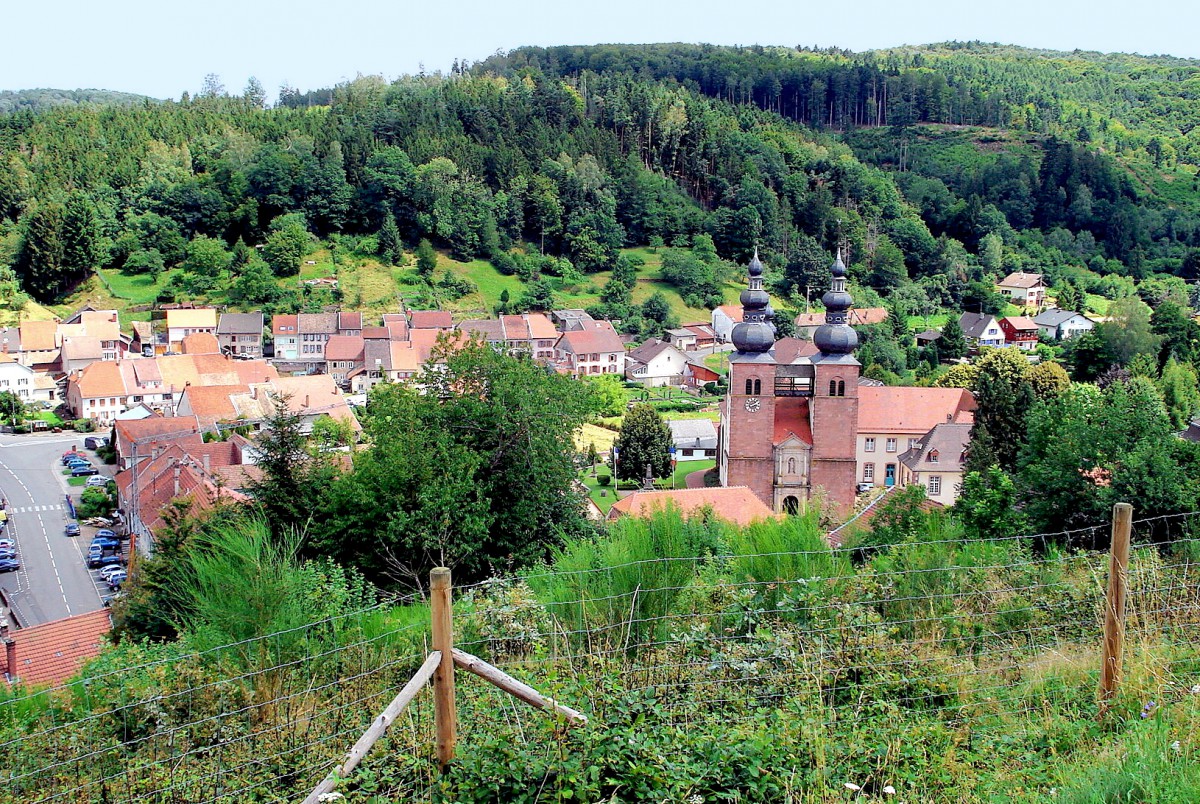
The chapel on the rock of Dabo
![The Rock of Dabo © Gzen92 - licence [CC BY-SA 4.0] from Wikimedia Commons](https://frenchmoments.eu/wp-content/uploads/2022/04/Rocher-de-Dabo-Moselle-©-Gzen92-licence-CC-BY-SA-4.0-from-Wikimedia-Commons.jpg)
The Saint-Jacques church in Lunéville

In Alsace
Strasbourg Cathedral, a jewel of Gothic architecture in the Rhineland.
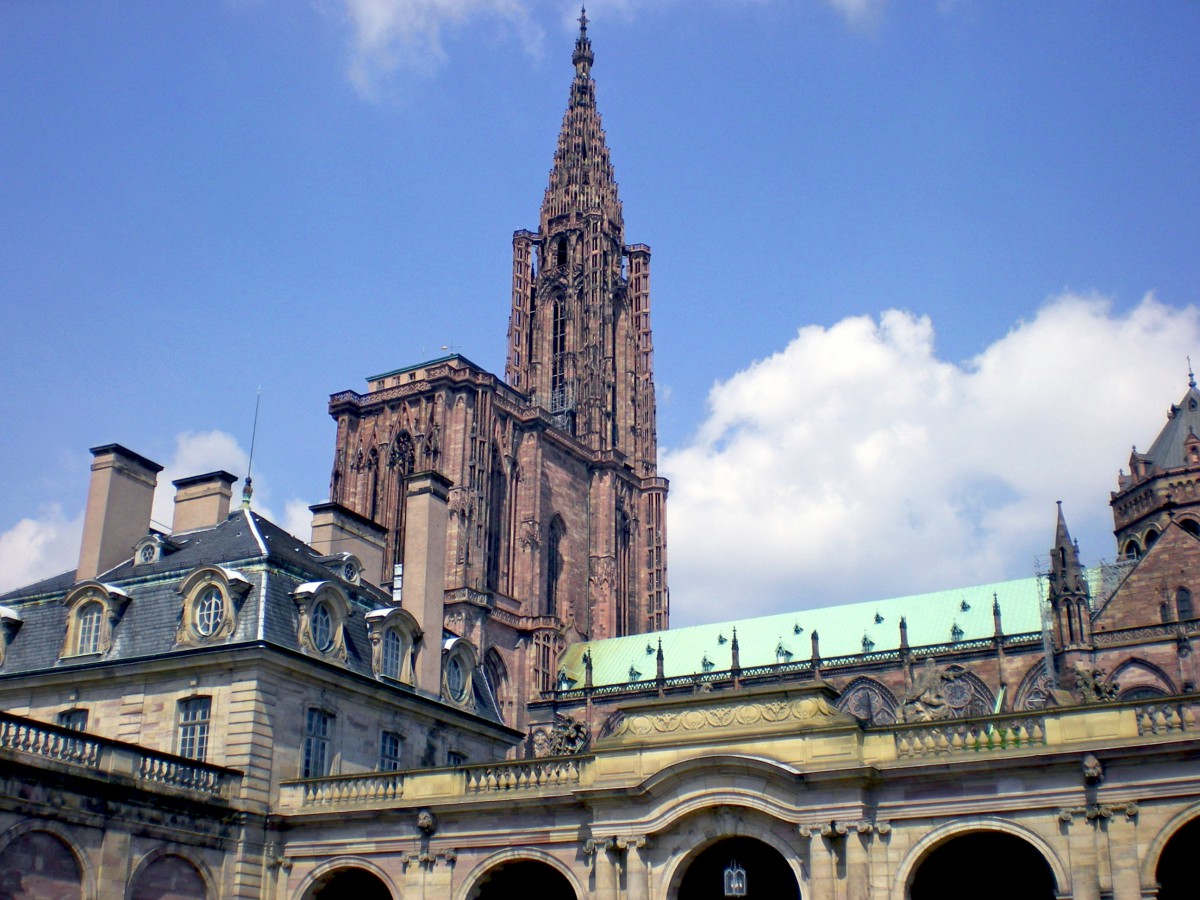
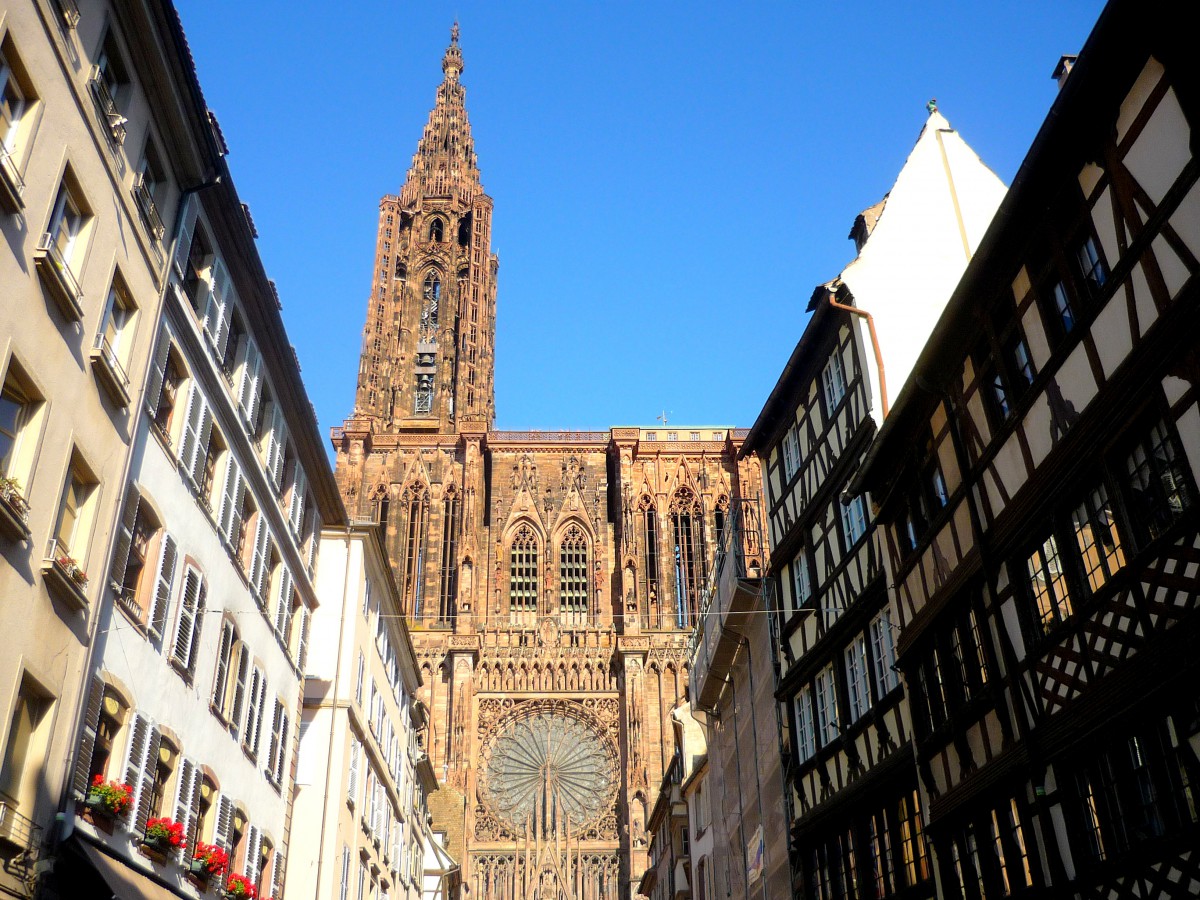
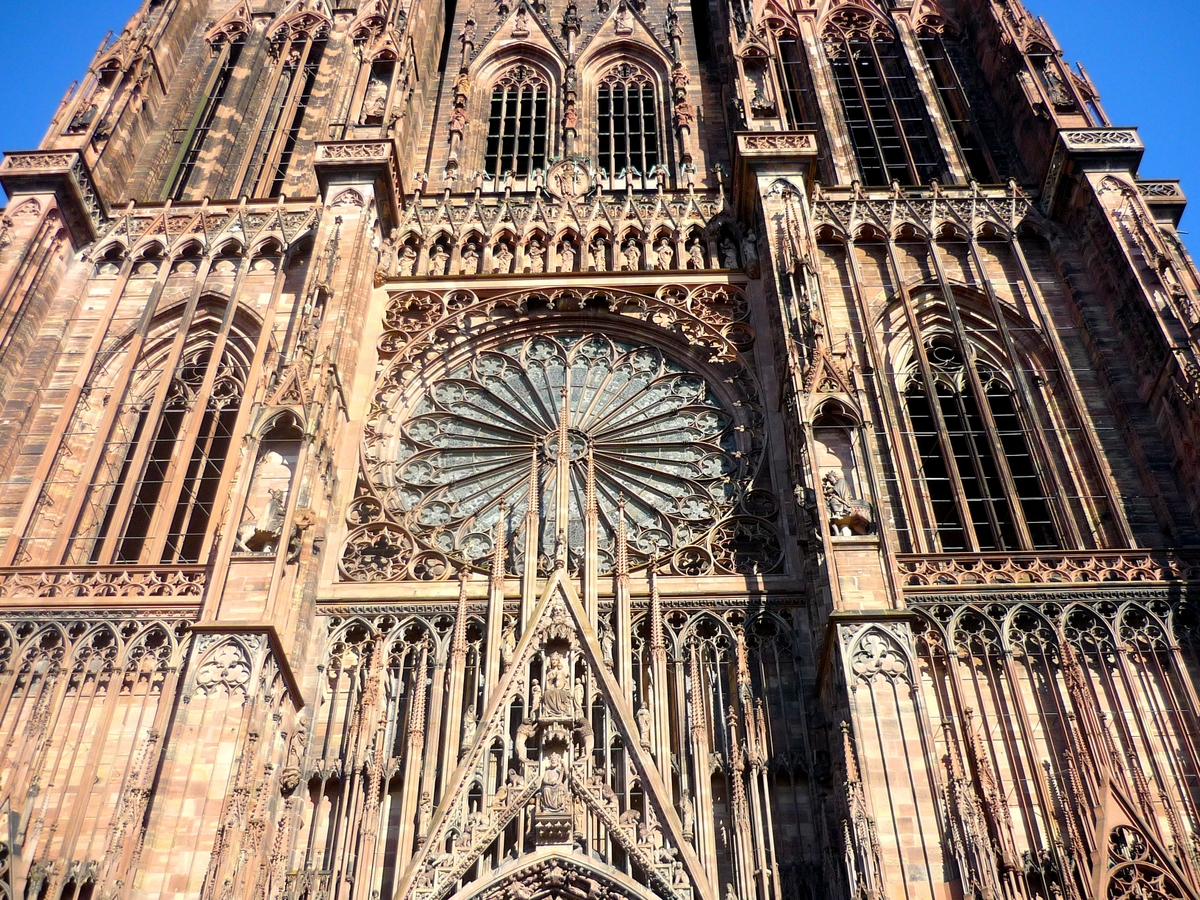
The Saint-Pierre le Jeune church in Strasbourg
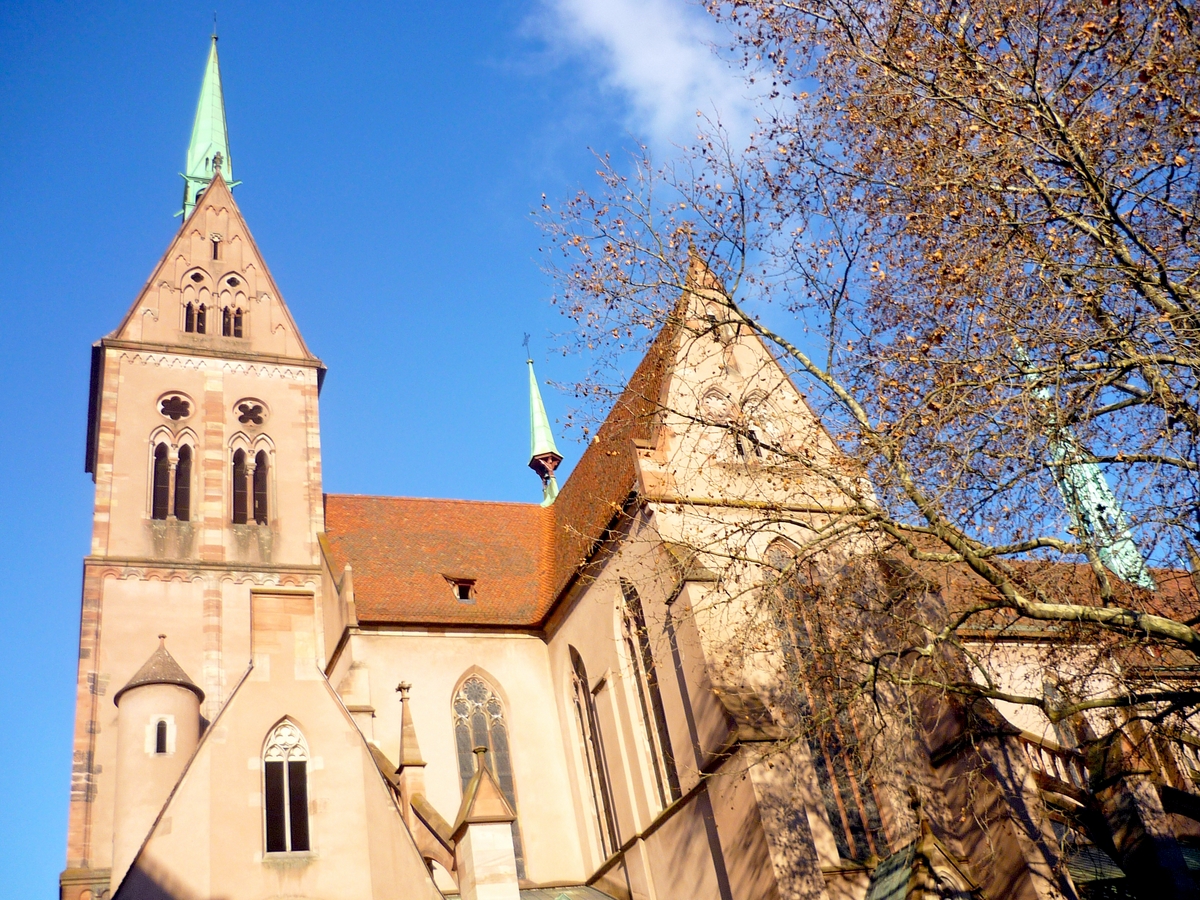
And, on the other side of the river Ill, the Saint-Pierre-le-Jeune Catholic Church in Strasbourg
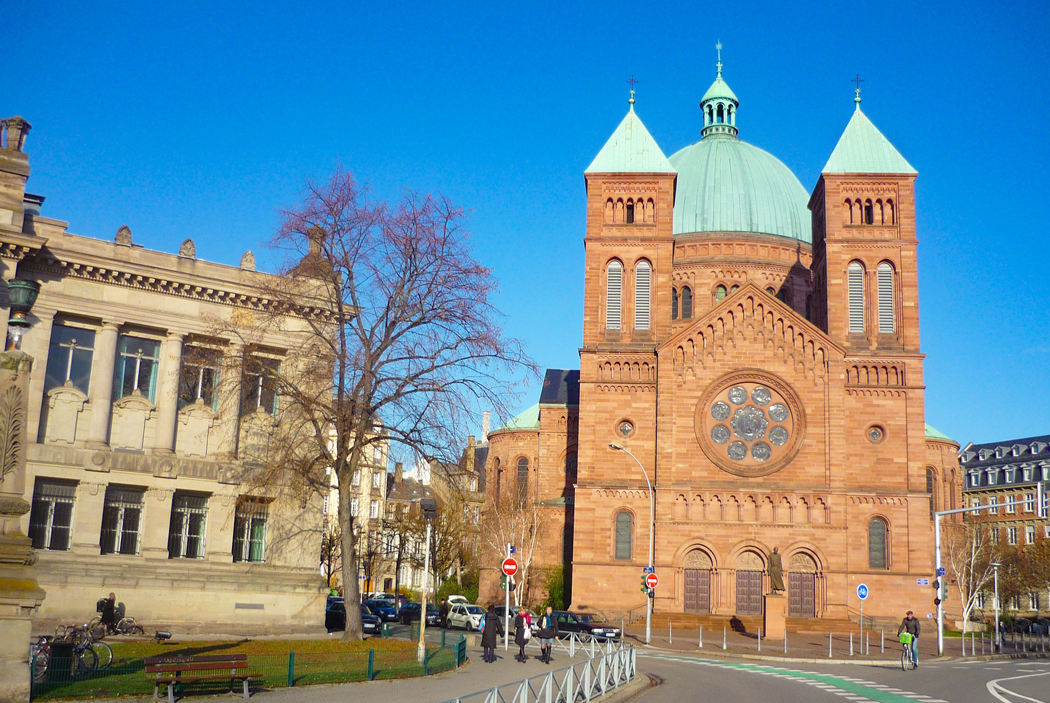
Saint-Thomas church in Strasbourg
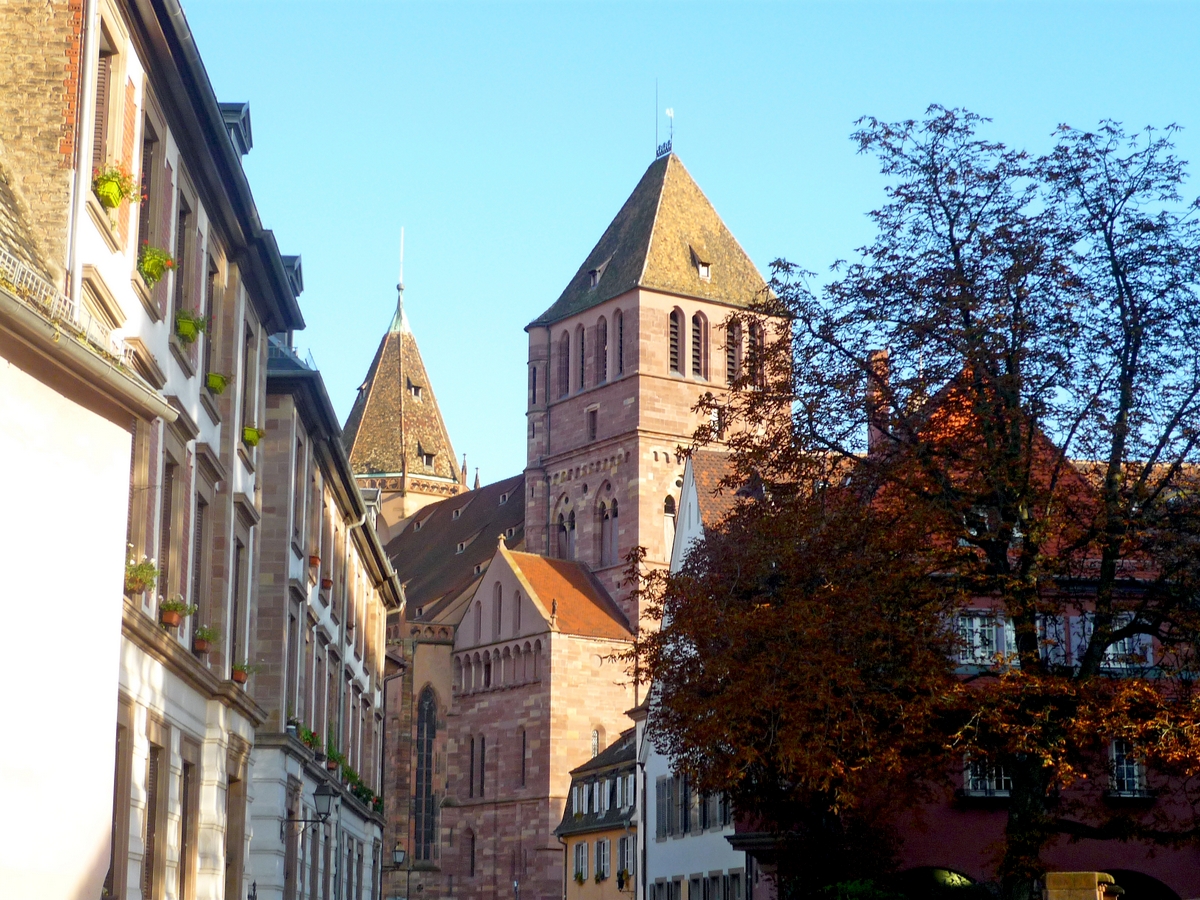
The Saint-Paul church in the imperial district of Strasbourg
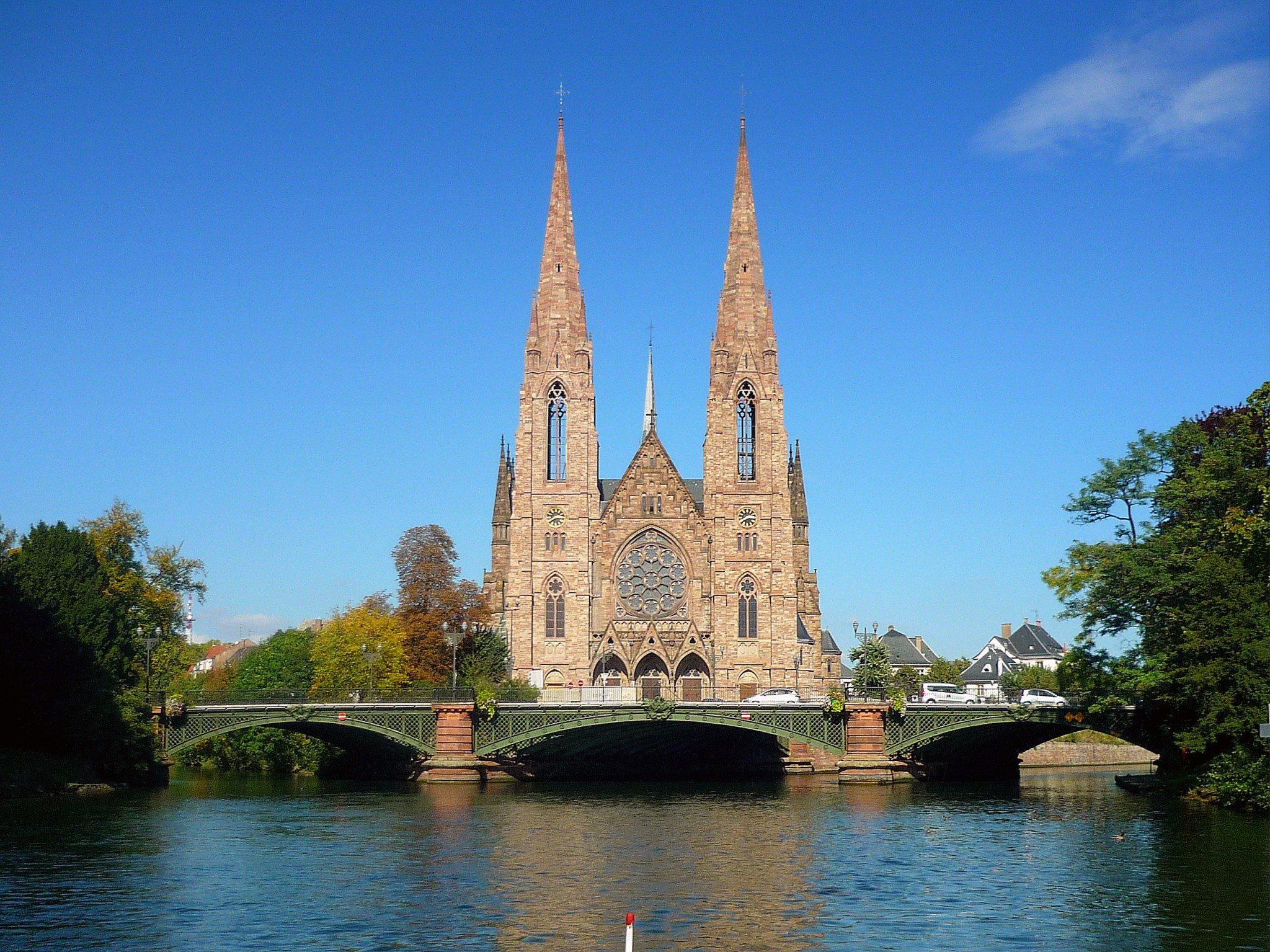
The Sainte-Foy church in Sélestat
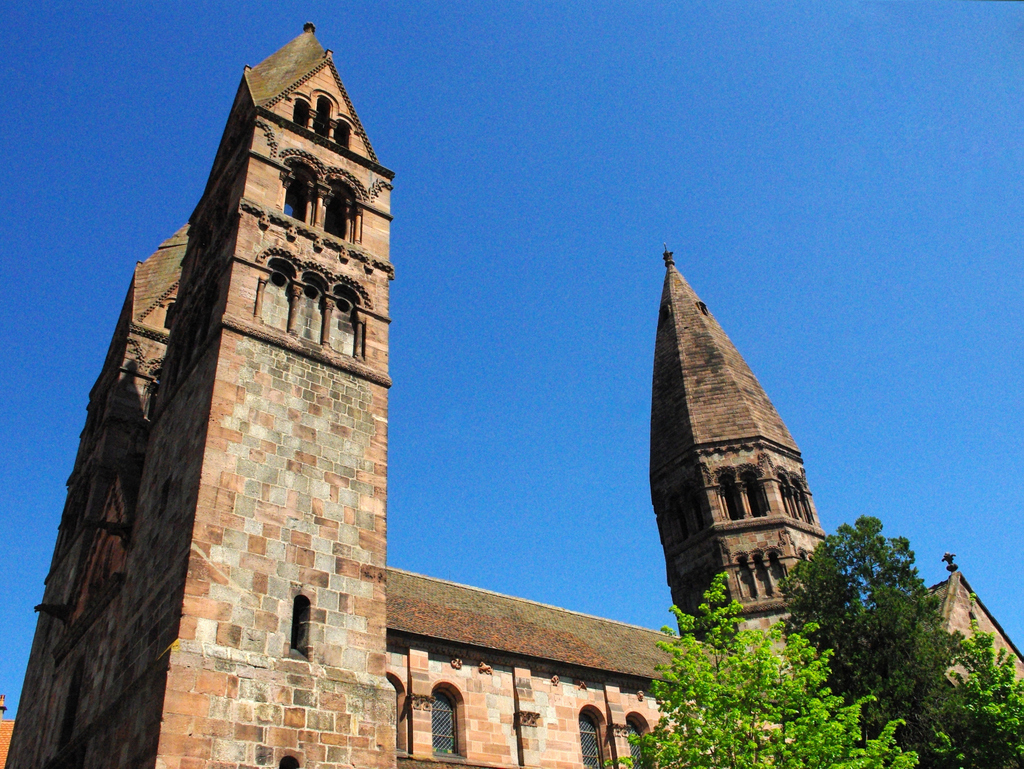
The Hohenberg Abbey at Mont-Sainte-Odile
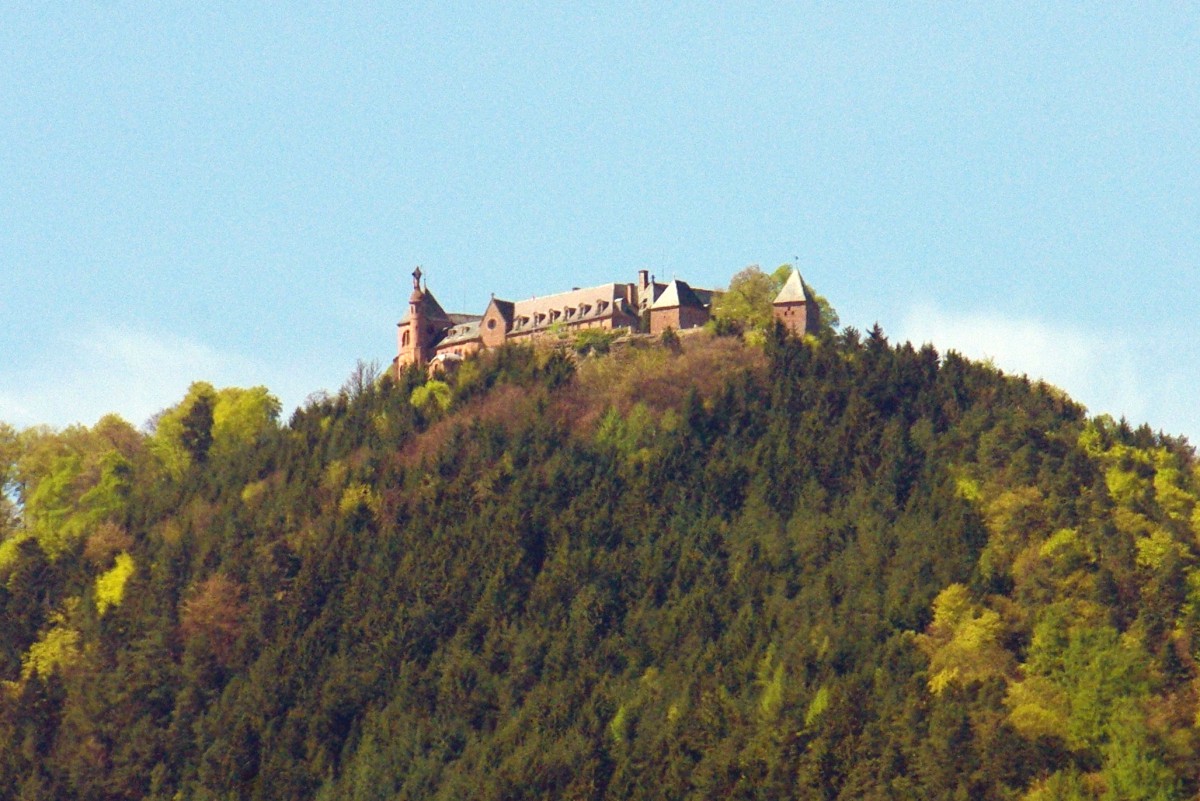
The church of Rosheim
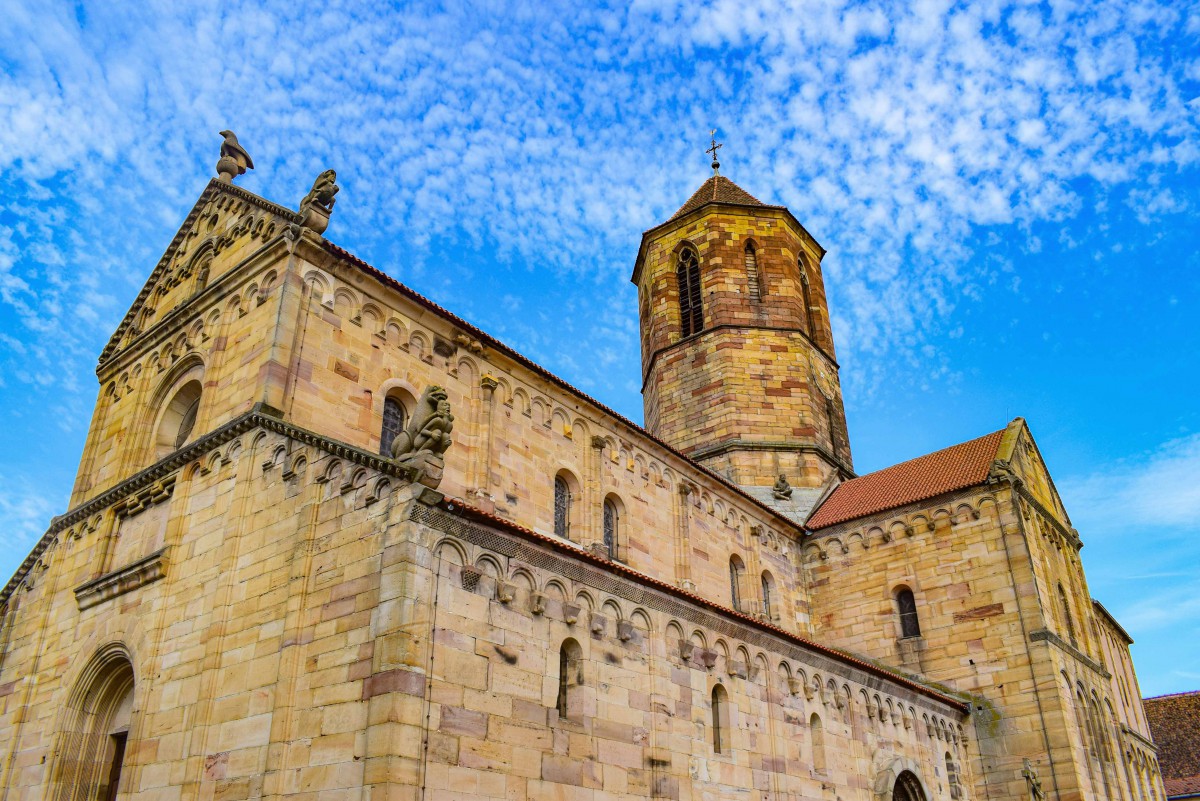
The abbey of Murbach
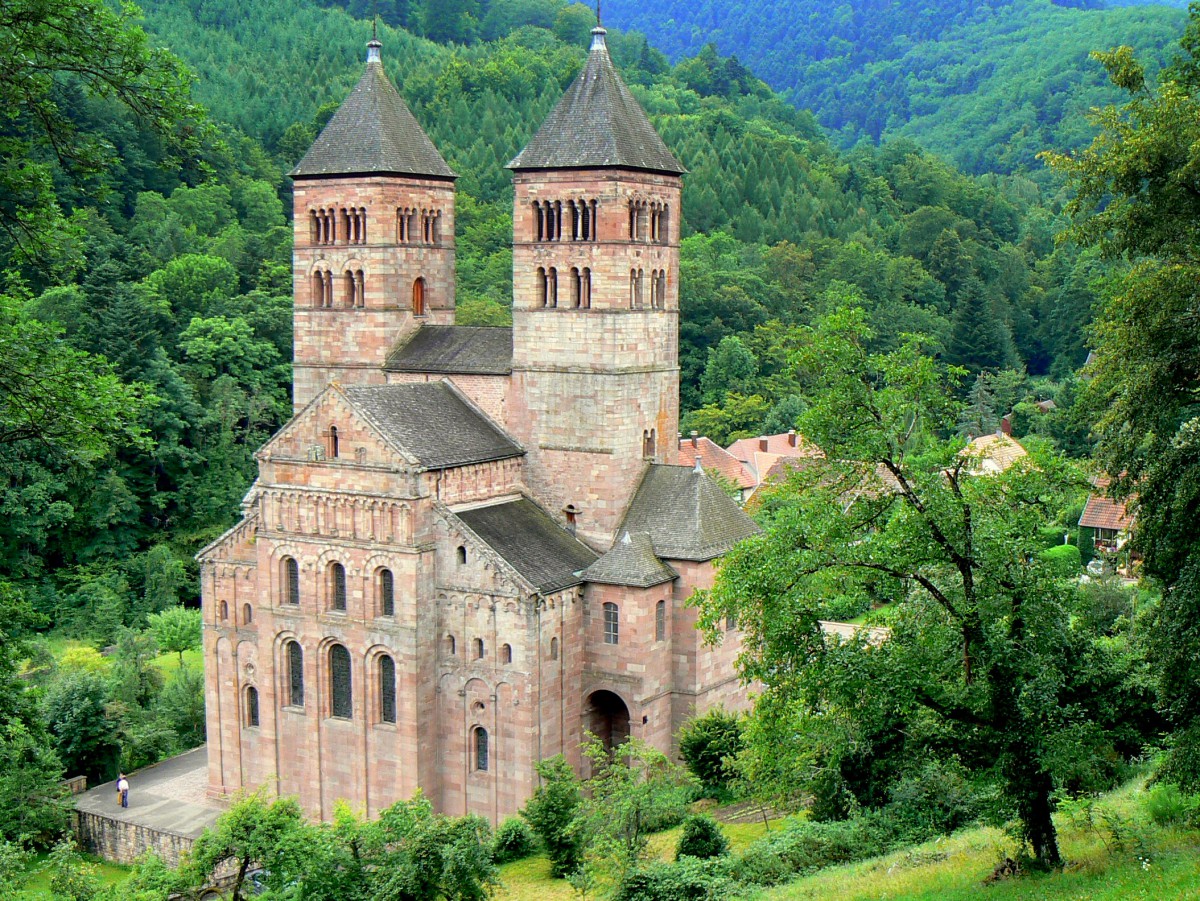
The church of Gueberschwihr

The churches of Guebwiller: Saint-Leger and Notre-Dame
![Vosges Sandstone in Guebwiller - Church of Saint-Leger © Ralph Hammann - licence [CC BY-SA 4.0] from Wikimedia Commons](https://frenchmoments.eu/wp-content/uploads/2022/04/Guebwiller-Saint-Leger-©-Ralph-Hammann-licence-CC-BY-SA-4.0-from-Wikimedia-Commons.jpg)
![Vosges Sandstone in Guebwiller - Church of Notre-Dame © Ralph Hammann - licence [CC BY-SA 4.0] from Wikimedia Commons](https://frenchmoments.eu/wp-content/uploads/2022/04/Eglise-Notre-Dame-de-Guebwiller-©-Ralph-Hammann-licence-CC-BY-SA-4.0-from-Wikimedia-Commons.jpg)
The Saint-Etienne protestant church in Mulhouse
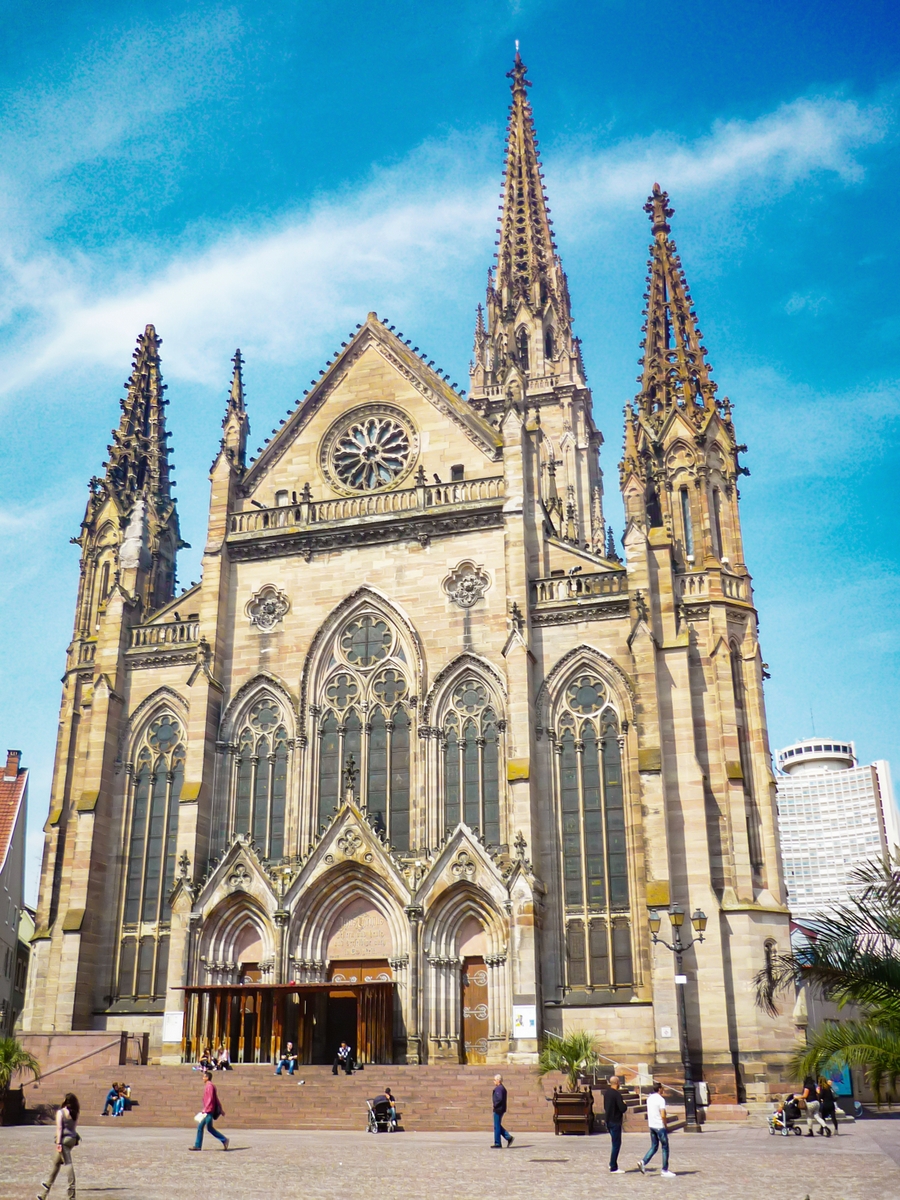
The abbey church of Marmoutier
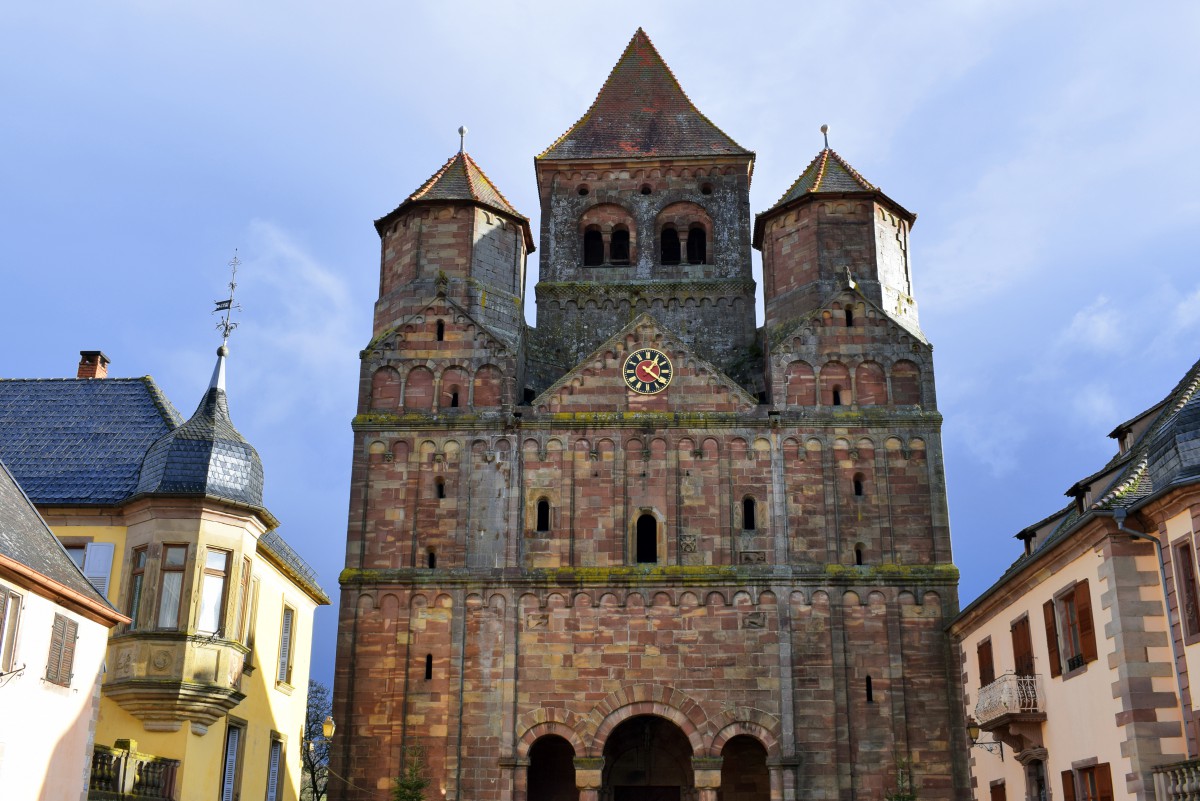
The abbey church of Wissembourg
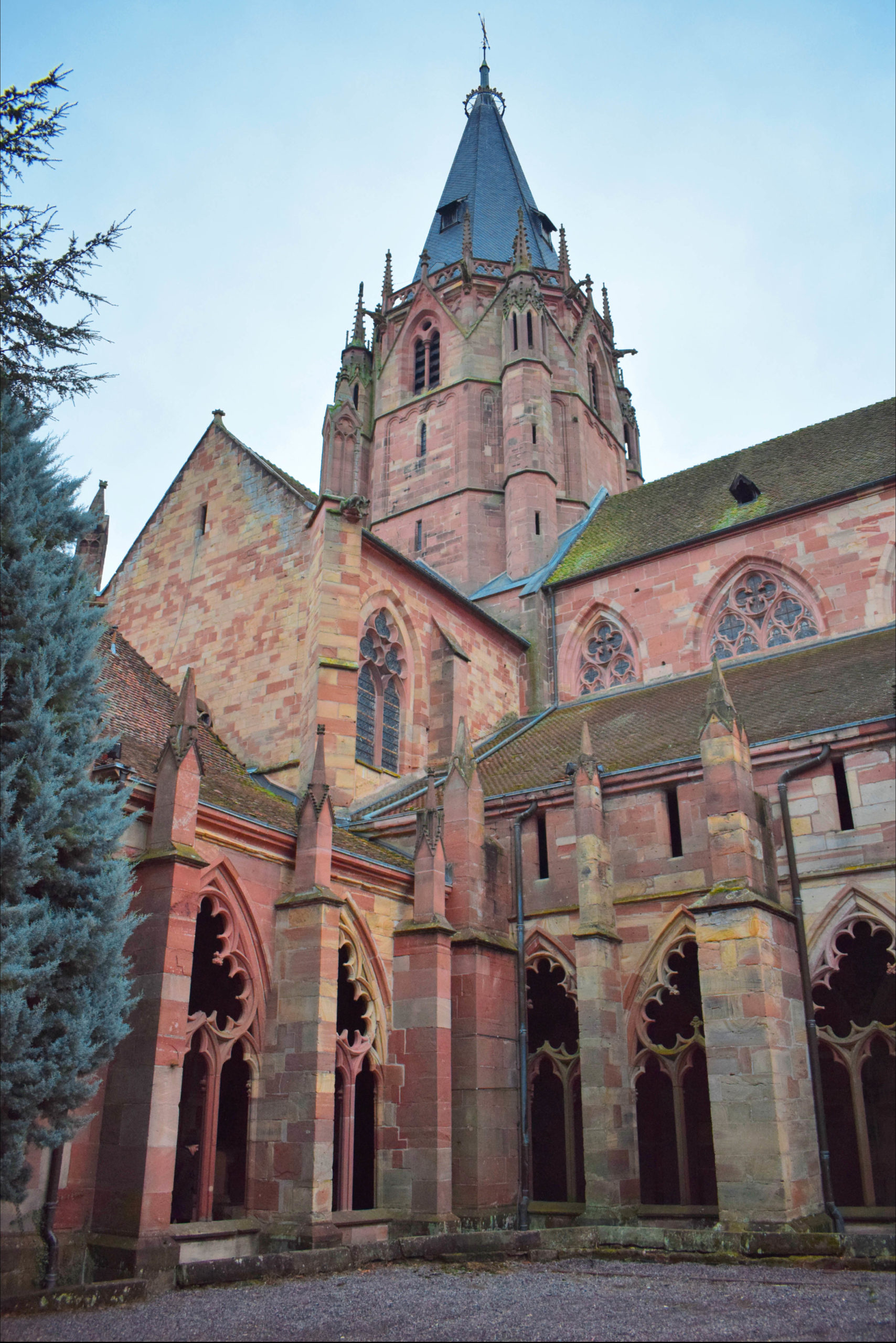
The churches of Neuwiller-lès-Saverne: Saint-Adelphe and the abbey church of Saints-Pierre-et-Paul
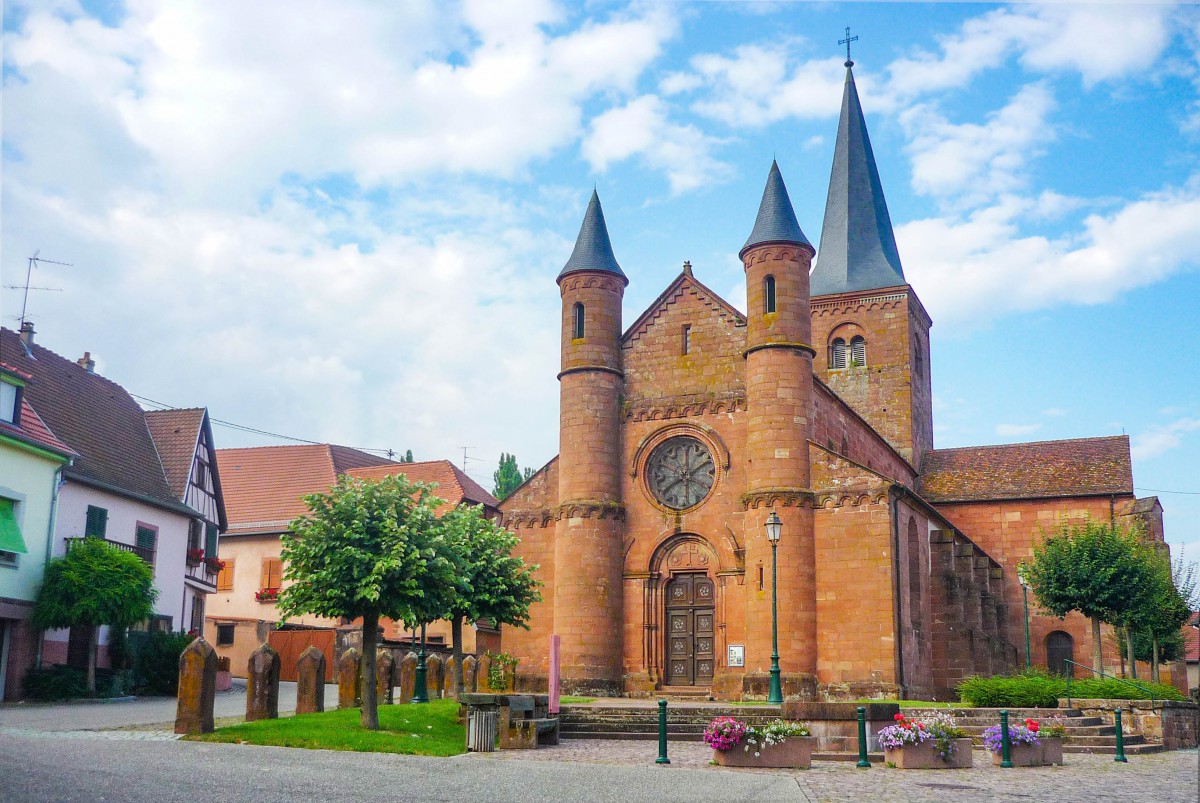
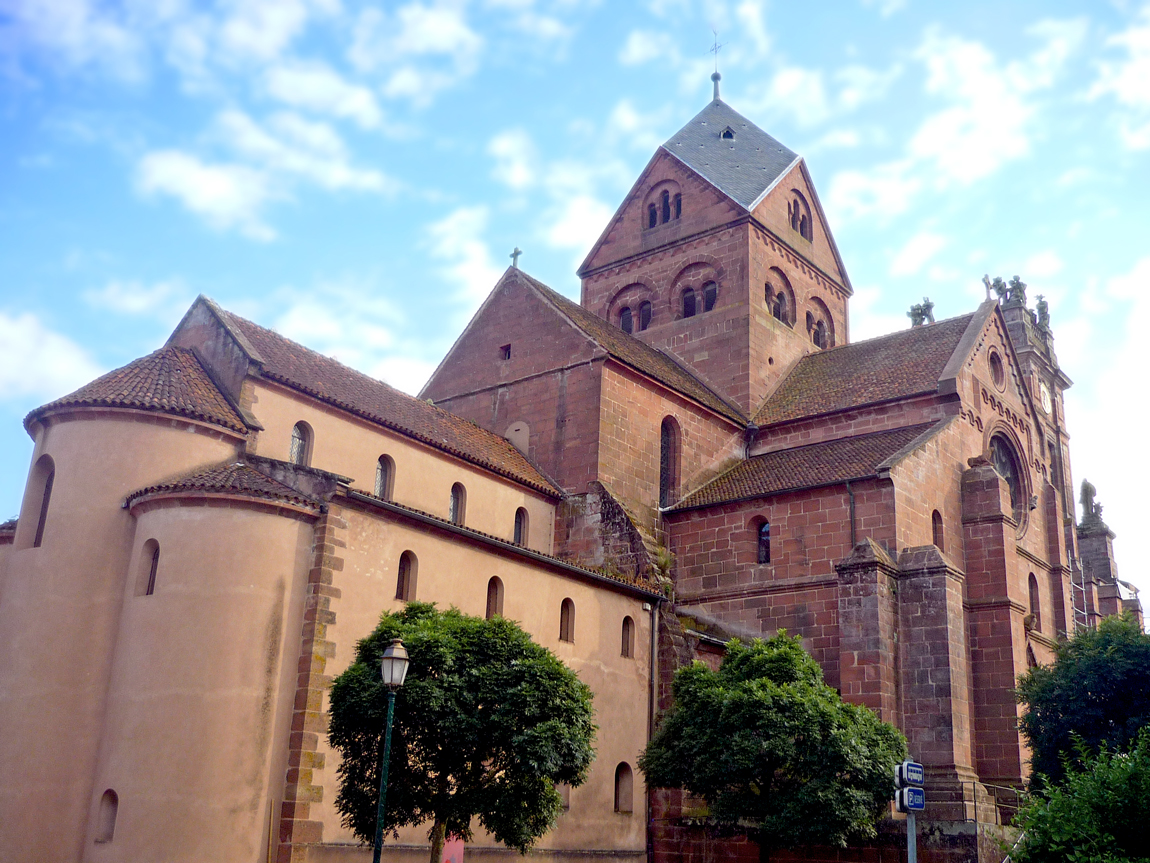
The cathedral of Saint-Christophe in Belfort

Vosges sandstone was also used for religious sculptures in Alsace, especially Romanesque ones:
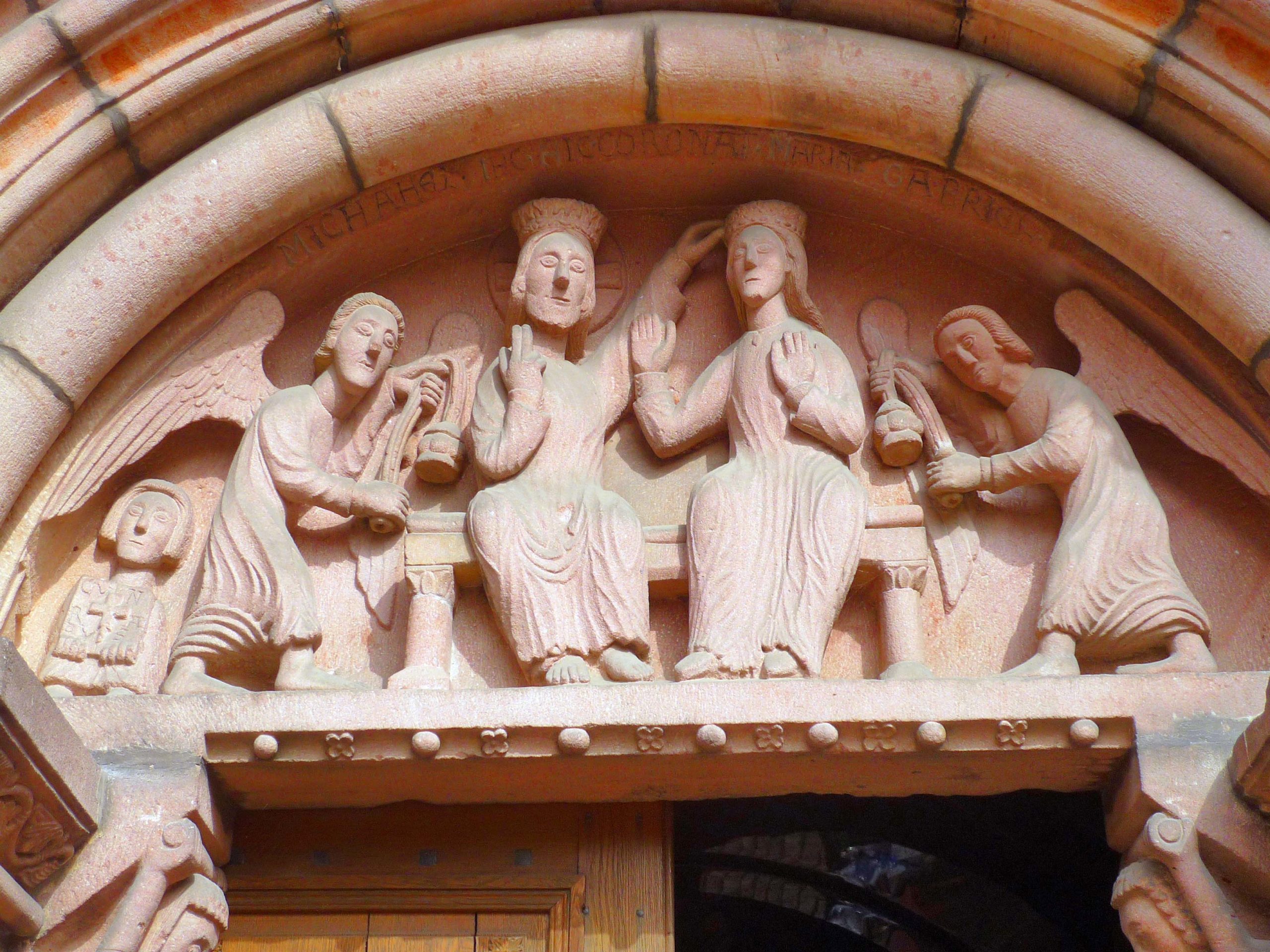
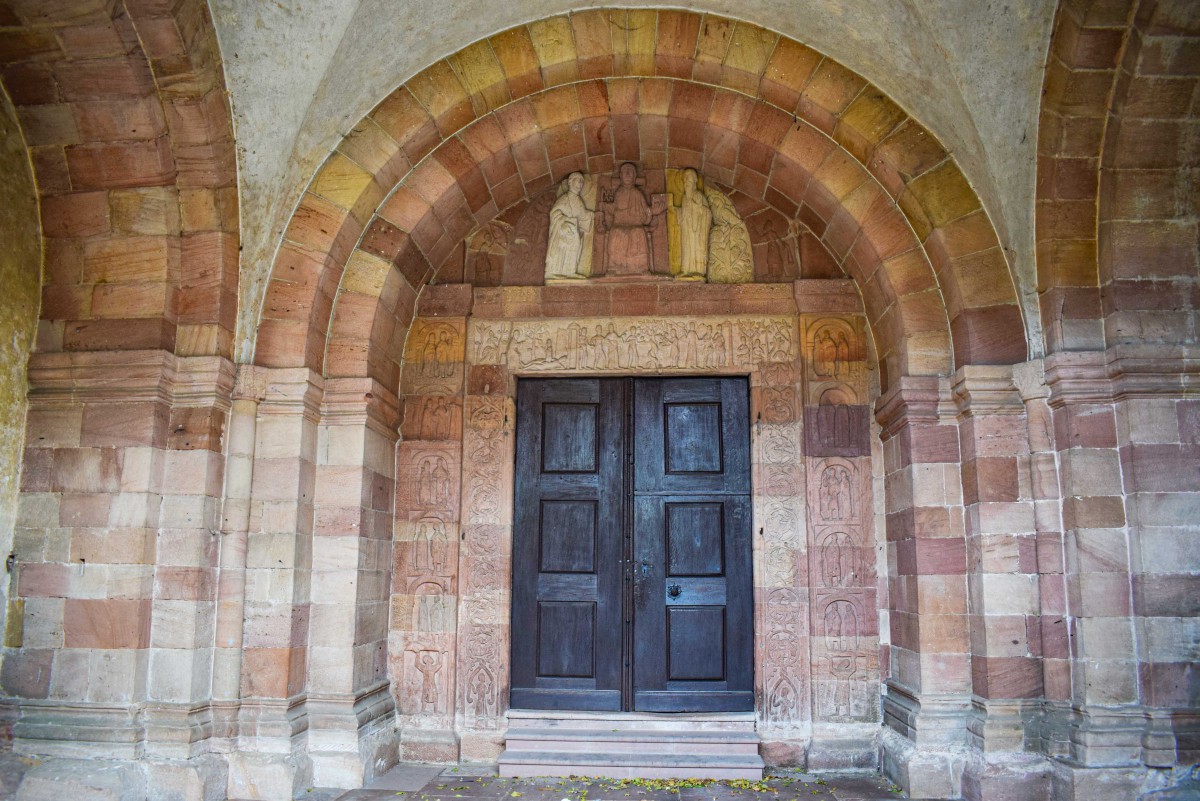
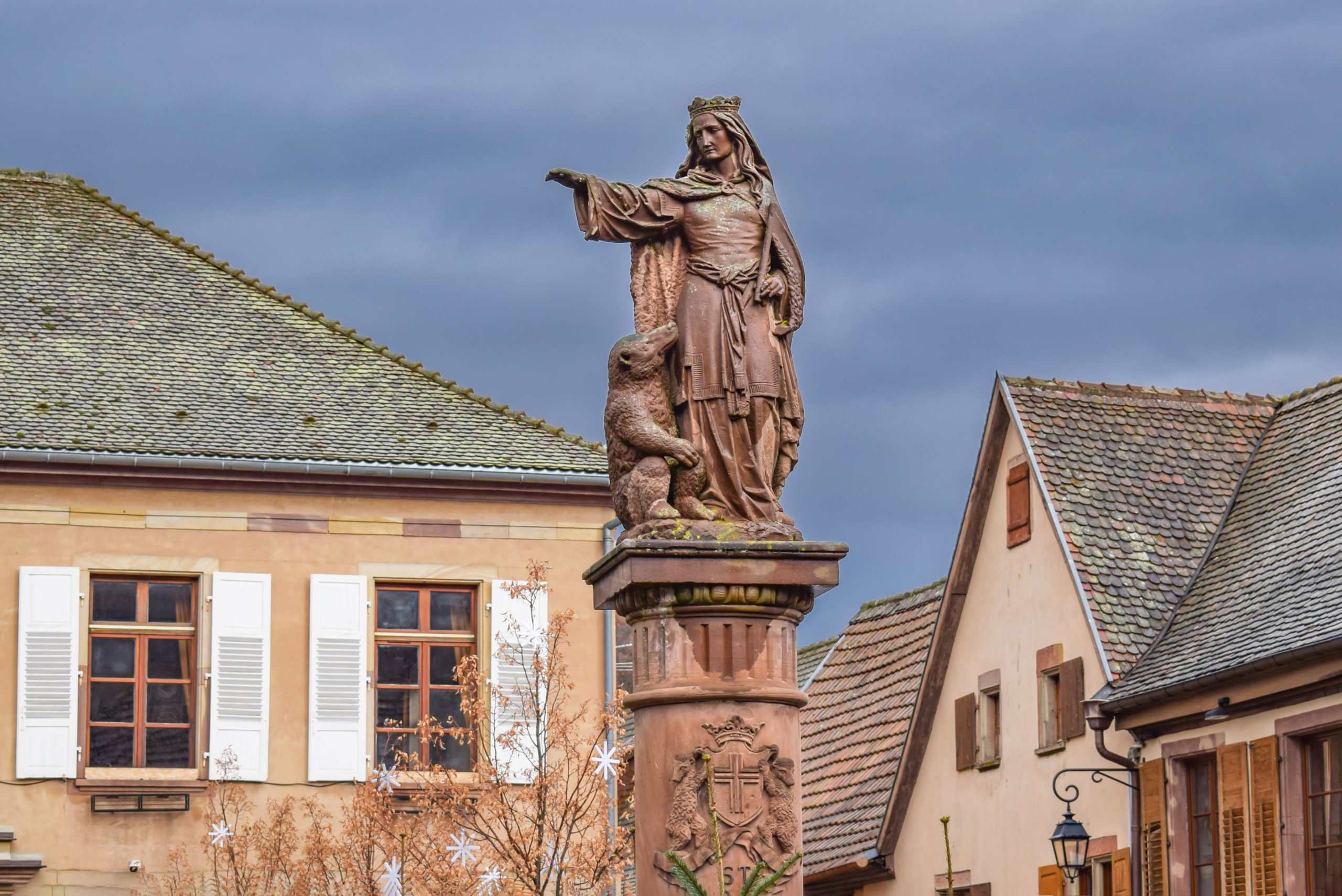
In Germany
The Imperial Cathedral of Speyer
![Speyer Dom © BlueBreezeWiki - licence [CC BY-SA 3.0] from Wikimedia Commons](https://frenchmoments.eu/wp-content/uploads/2022/04/Speyer-Dom-©-BlueBreezeWiki-licence-CC-BY-SA-3.0-from-Wikimedia-Commons.jpg)
The Protestant Stiftskirche in Landau in der Pfalz
![The Stiftskirche in Landau in der Pfalz © Tilman2007 - licence [CC BY-SA 4.0] from Wikimedia Commons](https://frenchmoments.eu/wp-content/uploads/2022/04/Landau-in-der-Pfalz-Stiftskirche-©-Tilman2007-licence-CC-BY-SA-4.0-from-Wikimedia-Commons.jpg)
The Stiftskirche in Neustadt an der Weinstrasse
![Neustadt: the Stiftskirche © AnRo0002 - licence [CC0] from Wikimedia Commons](https://frenchmoments.eu/wp-content/uploads/2022/04/Stiftskirche-Neustadt-©-AnRo0002-licence-CC0-from-Wikimedia-Commons.jpg)
Pink Vosges sandstone in other monuments
The use of Vosges pink sandstone can be found in the following sites:
The “pagan wall” of Mont Sainte-Odile. The 11-kilometre long mysterious enclosure is made of sandstone blocks.
![Pagan Wall of Mont Sainte Odile © Dietrich Krieger - licence [CC BY-SA 3.0] from Wikimedia Commons](https://frenchmoments.eu/wp-content/uploads/2022/04/Pagan-Wall-of-Mont-Sainte-Odile-©-Dietrich-Krieger-licence-CC-BY-SA-3.0-from-Wikimedia-Commons-scaled.jpg)
Many medieval city walls and city gates in Alsace
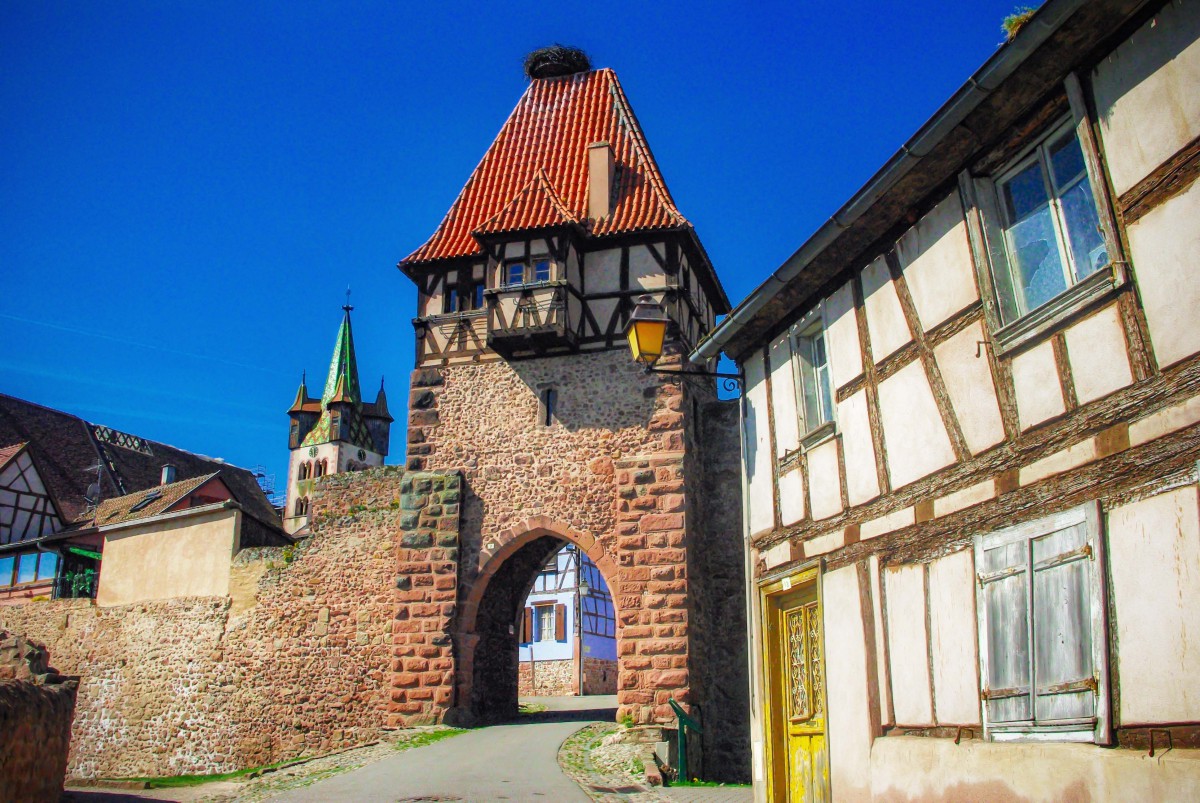

The town hall of Wissembourg
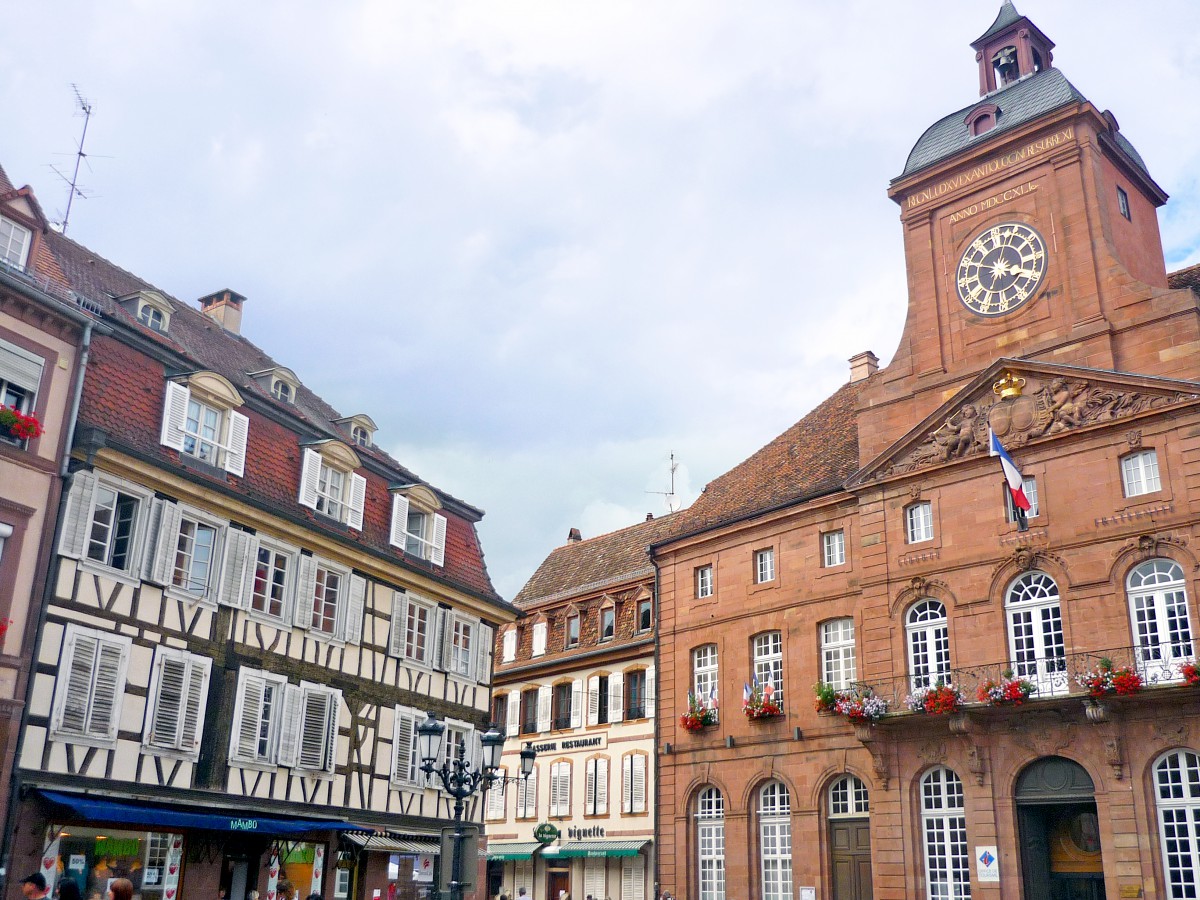
The Aubette along the Place Kléber in Strasbourg

Strasbourg’s central station
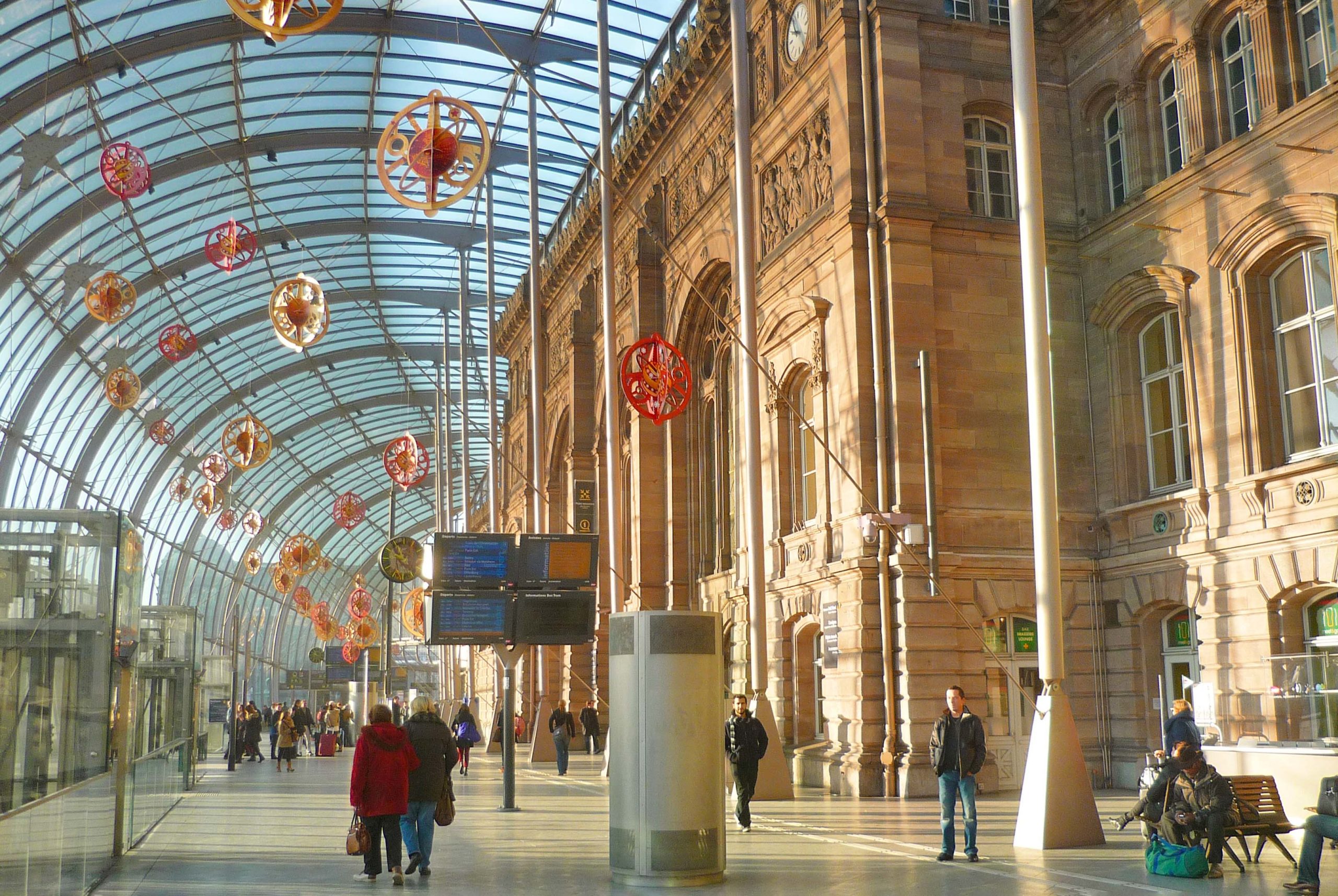
Mulhouse railway station
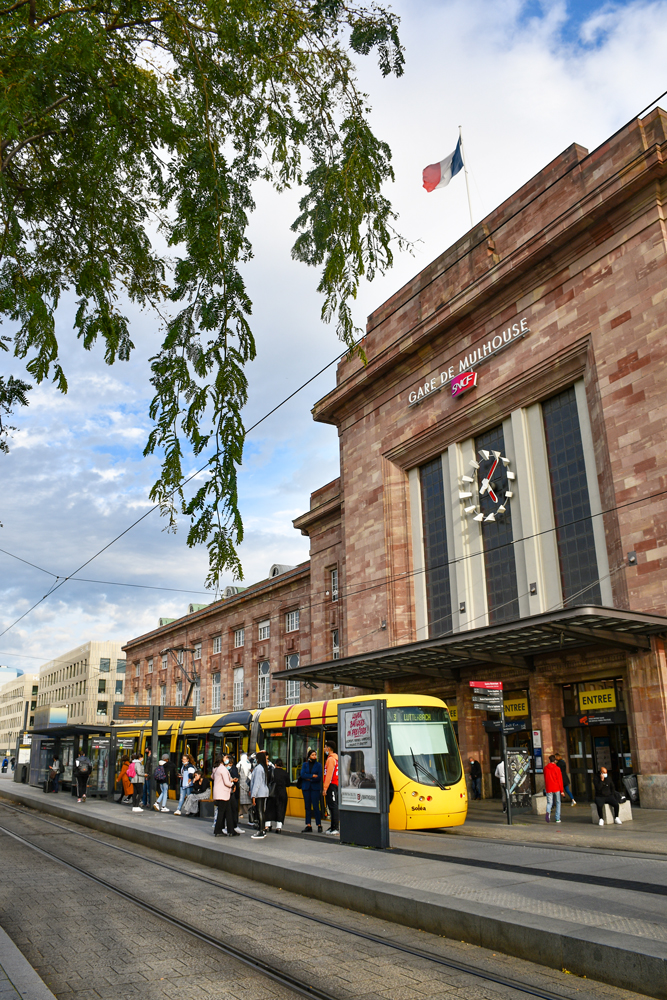
The citadel and the Lion of Belfort
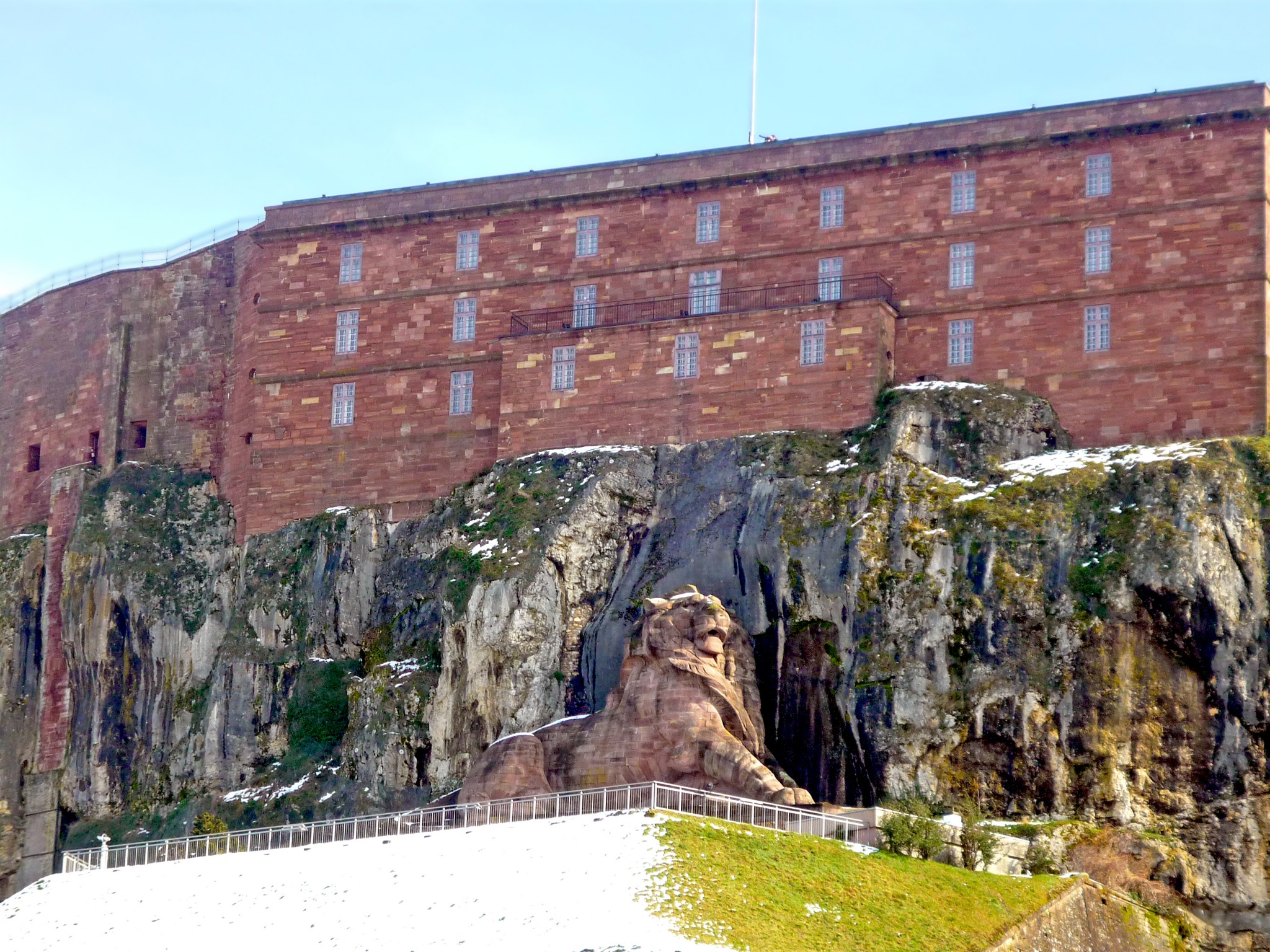
The Citadel of Bitche (Moselle)
![The citadel of Bitche © V.degouy - licence [CC BY-SA 4.0] from Wikimedia Commons](https://frenchmoments.eu/wp-content/uploads/2018/06/Citadelle-de-Bitche-©-V.degouy-licence-CC-BY-SA-4.0-from-Wikimedia-Commons.jpg)
The post office and several buildings in the imperial district of Metz
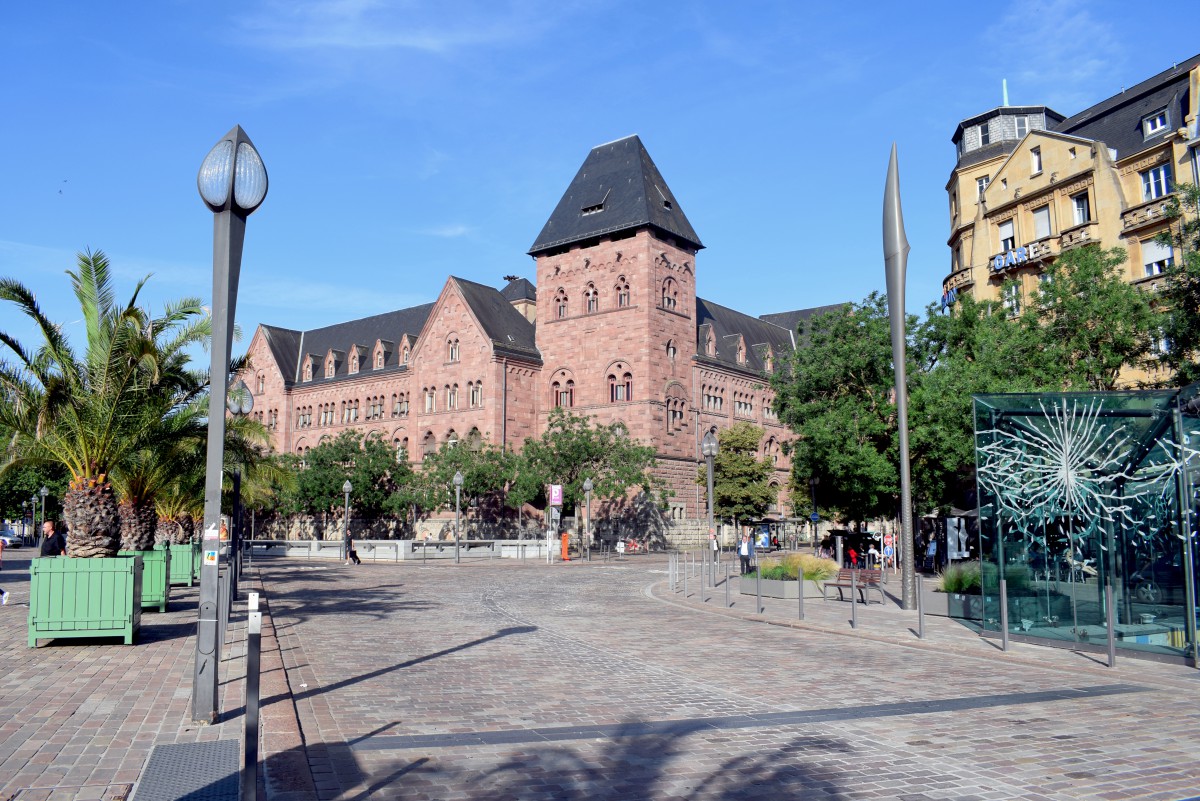
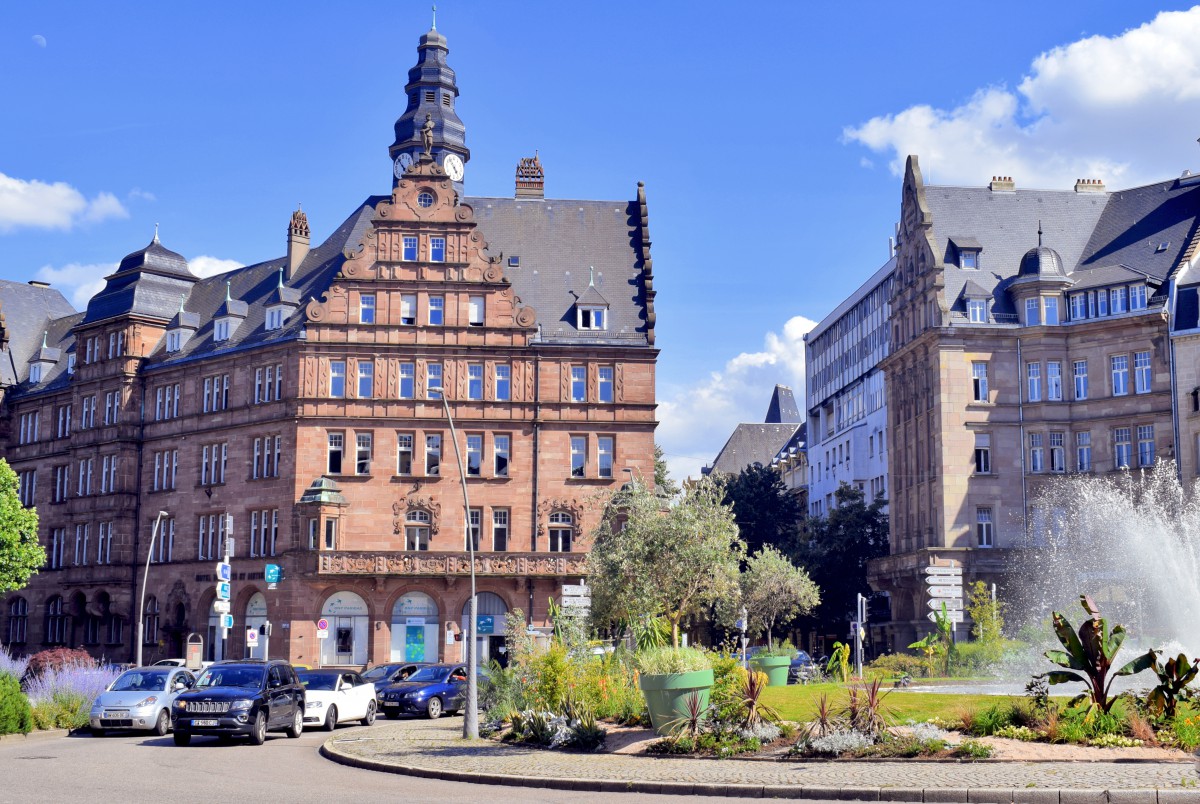

The merchants’ house in Lunéville

Vosges sandstone in Alsatian house
Hard, waterproof sandstone was often used as foundations and basements for Alsatian houses. It can also be found in window sills, door sills, window frames, lintels, acroteria and stair treads.
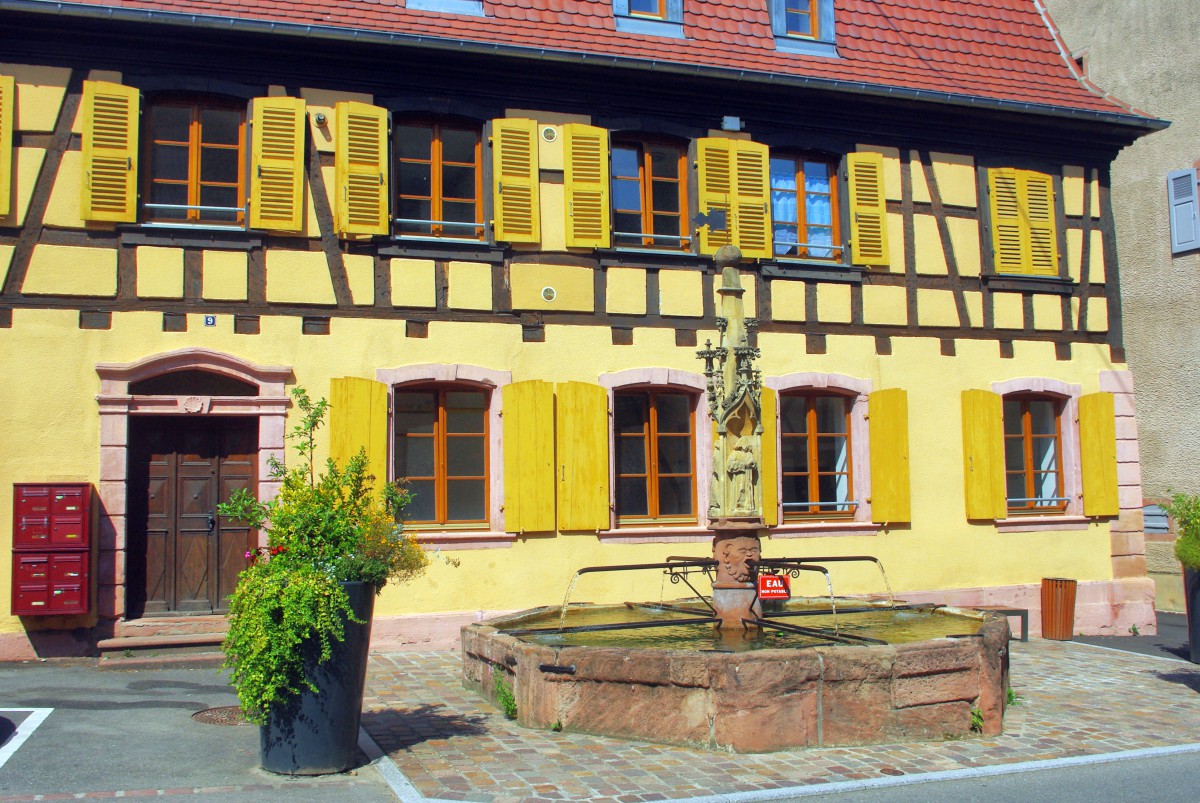
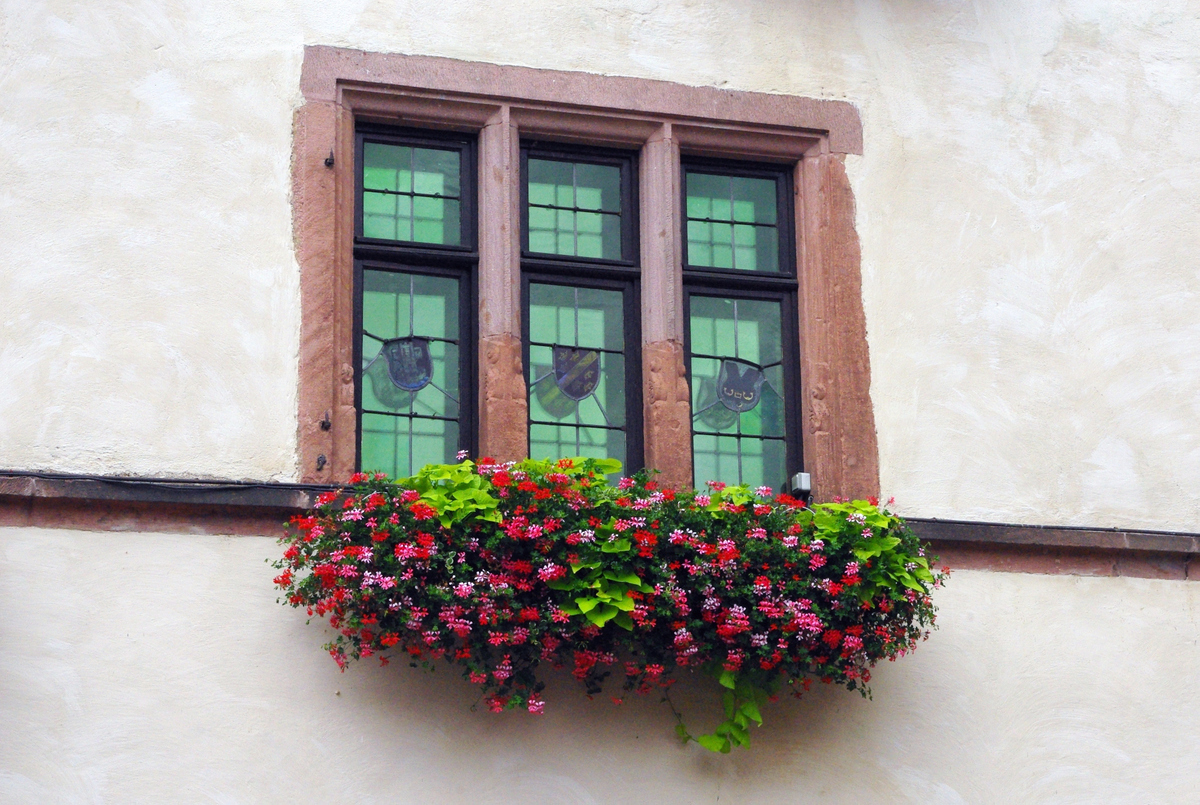
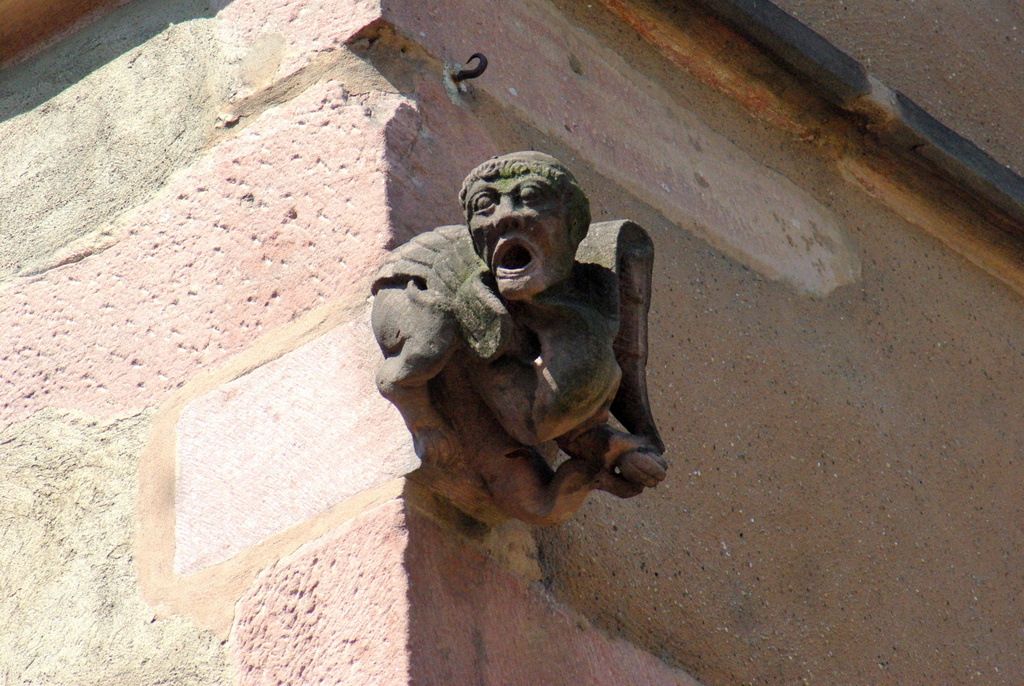
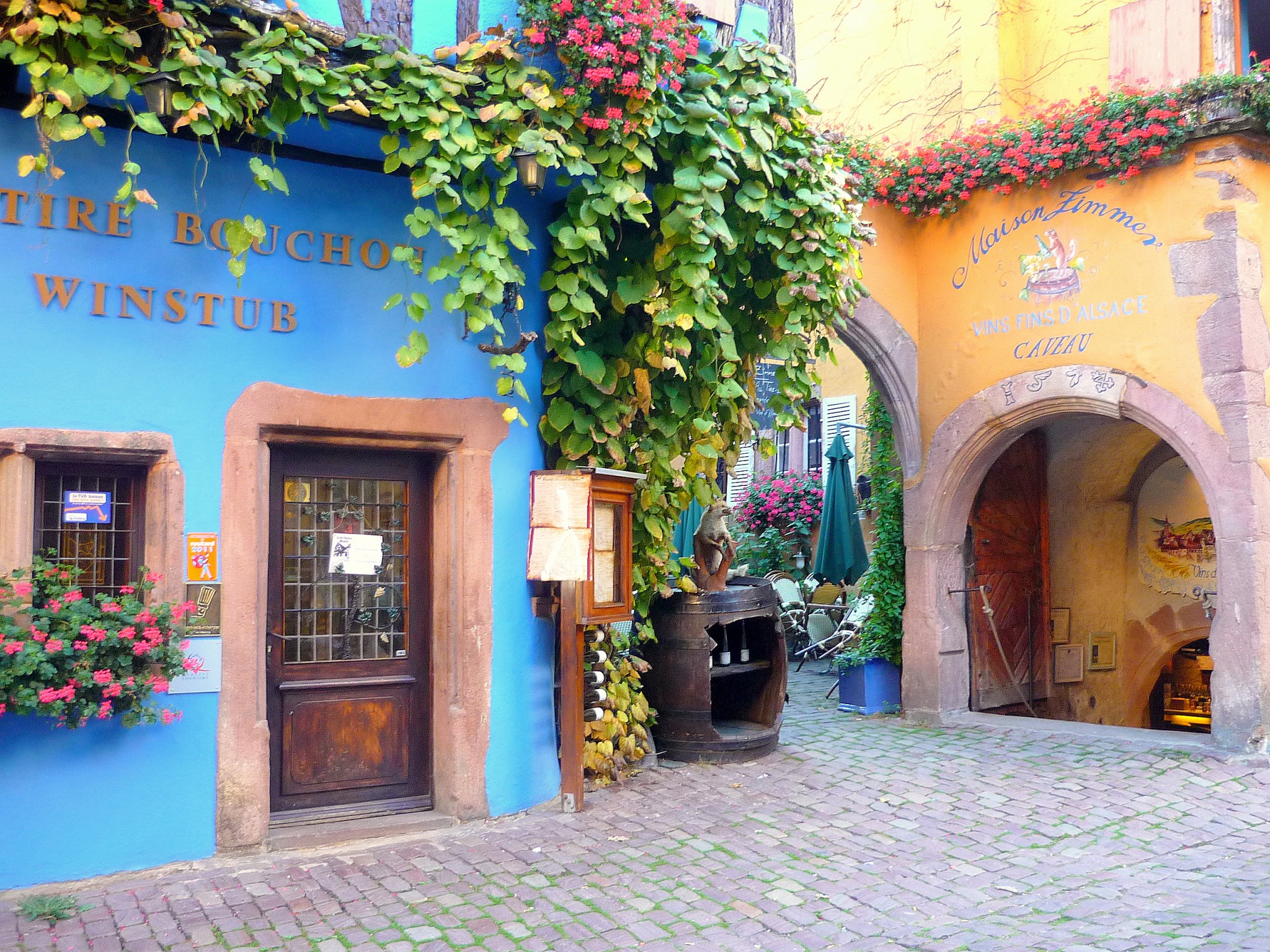
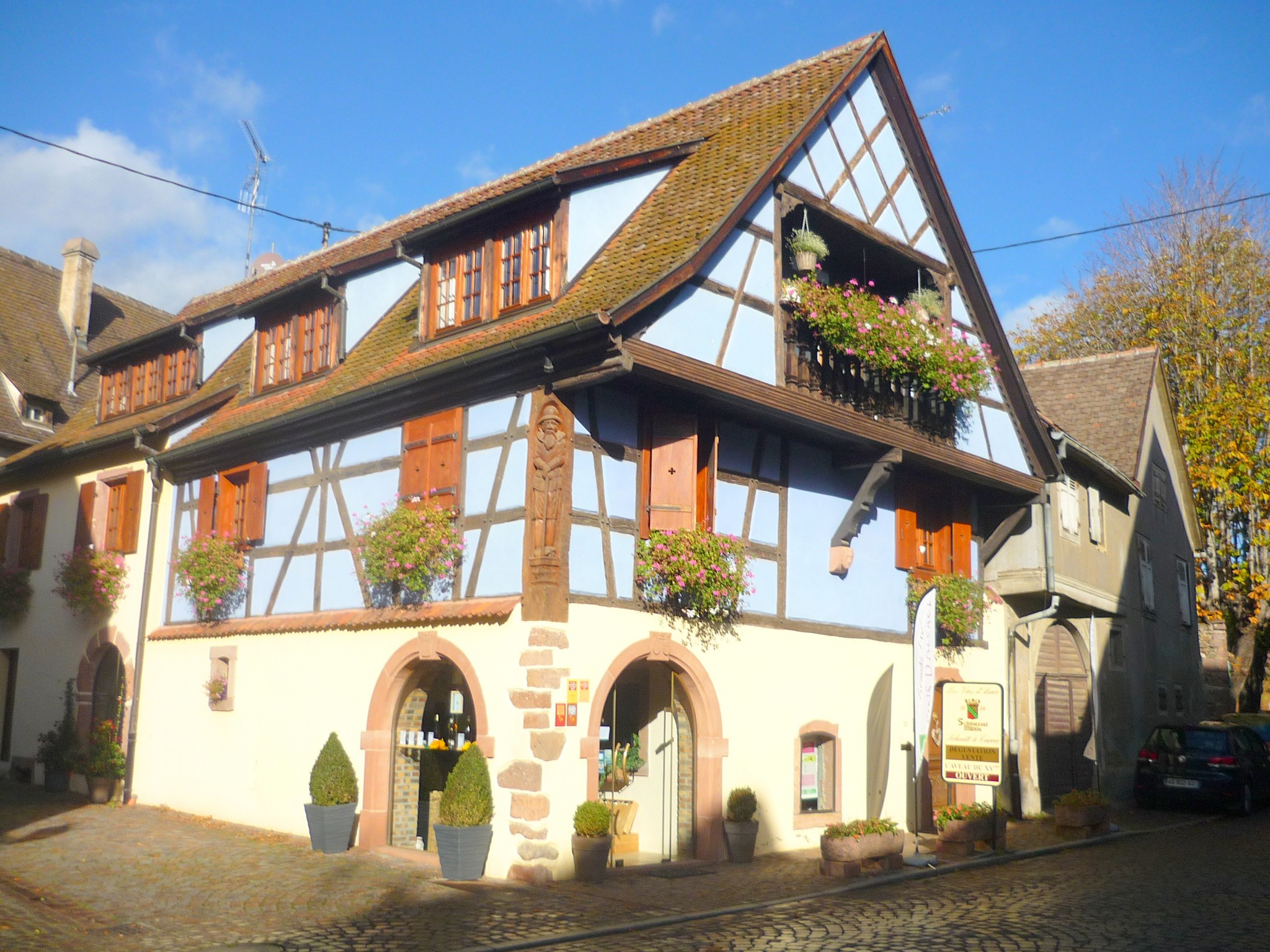
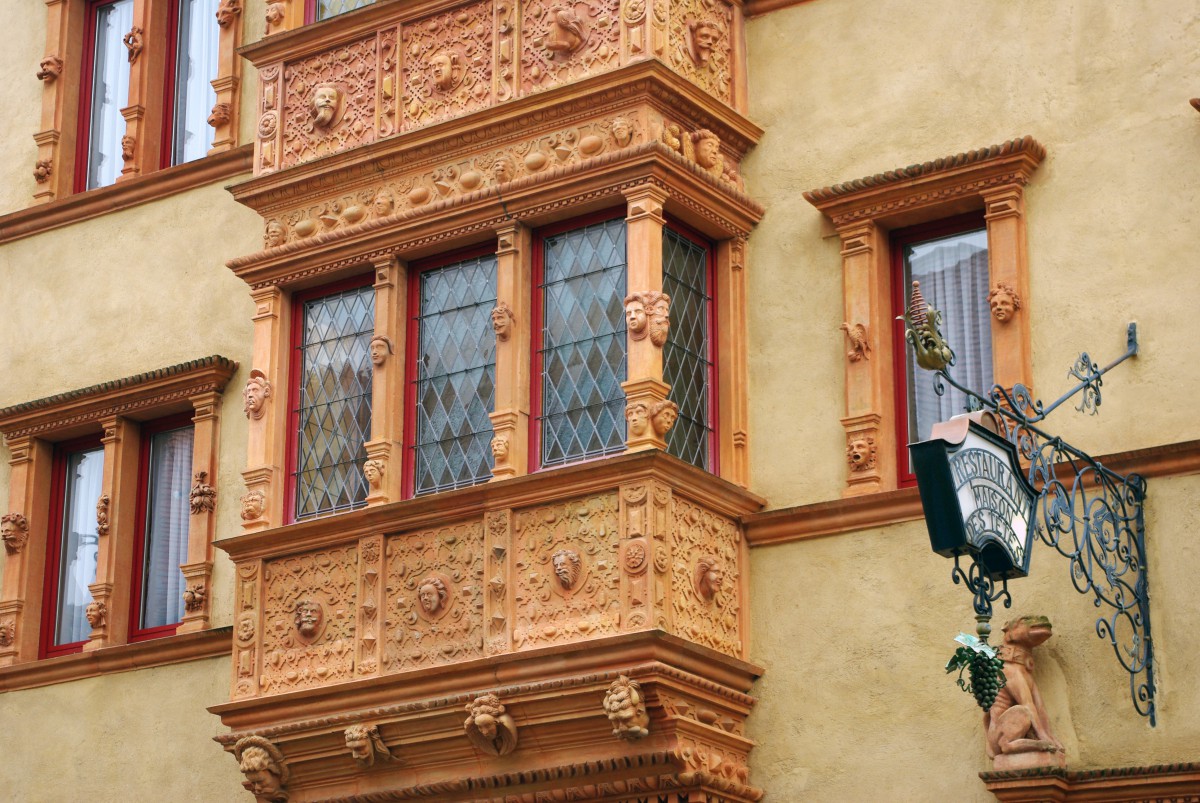
In Bergheim as in several other places of the Alsatian vineyard, the fountain is made of Vosges sandstone…
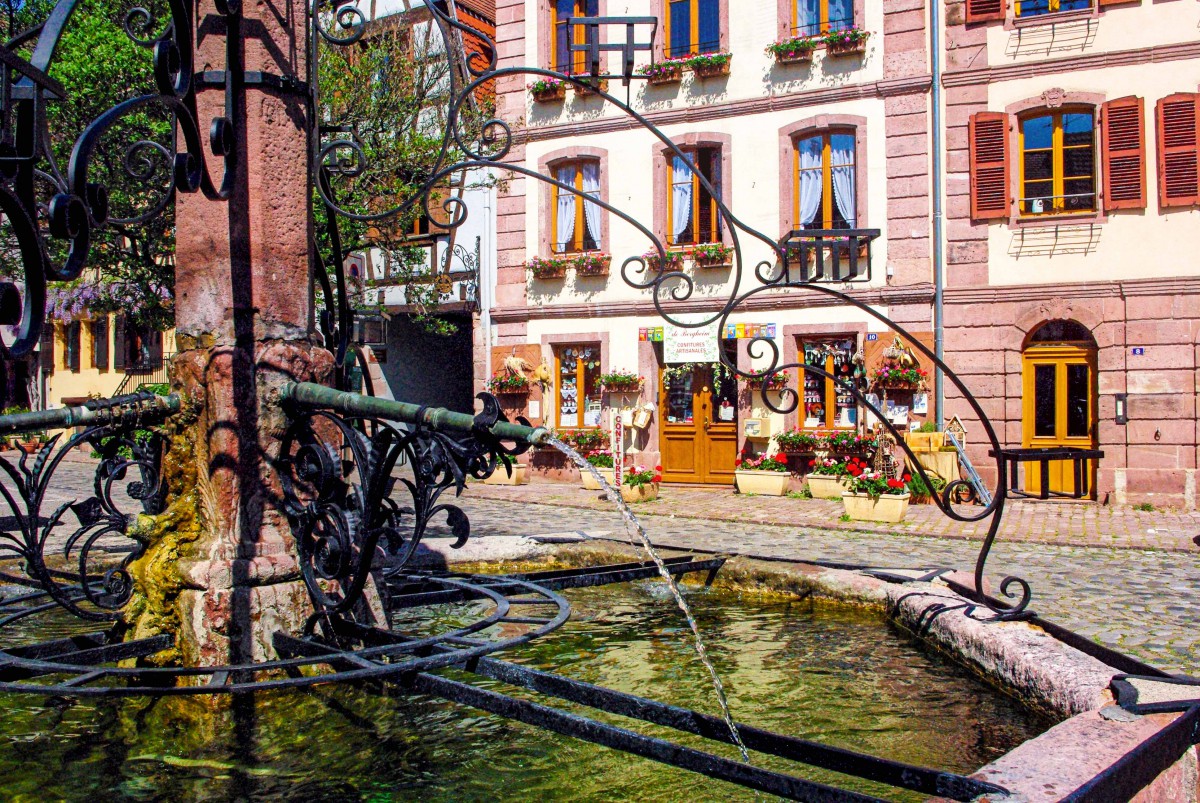
… as well as the famous Lack’mi which has been showing its backside to passers-by since the Middle Ages!
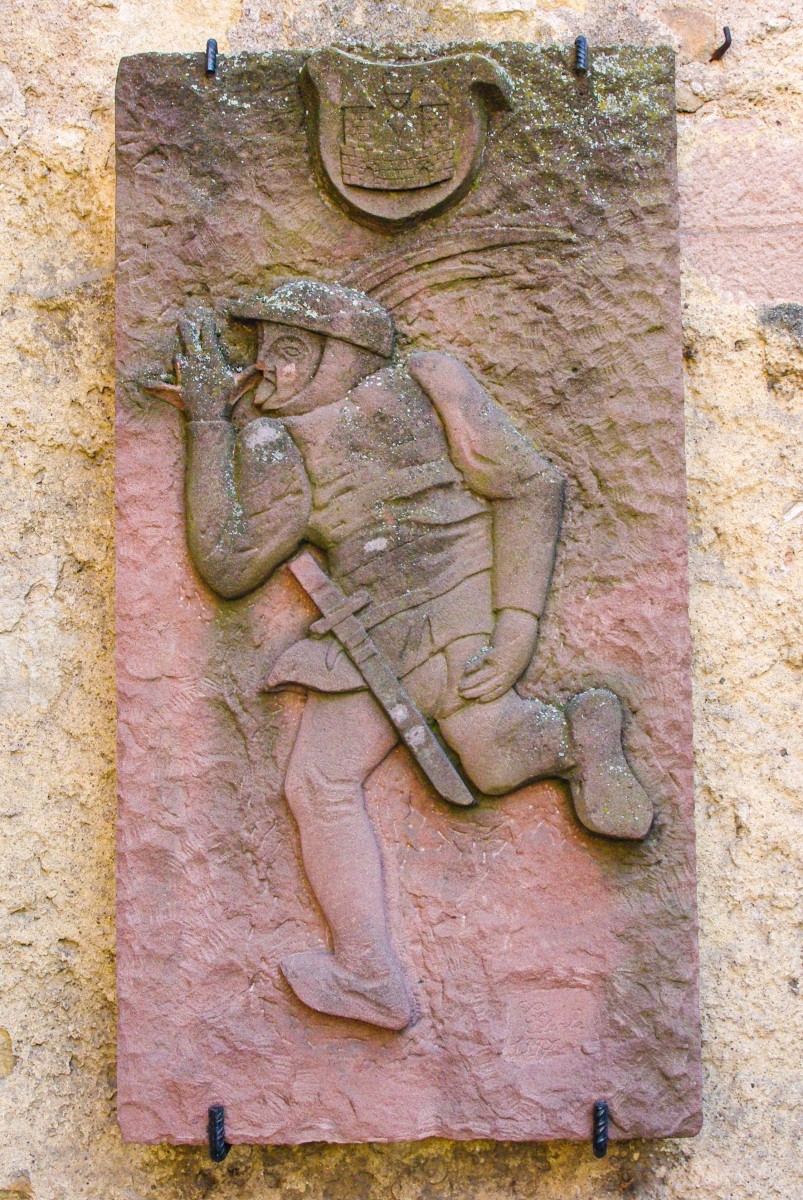
Bridges in Vosges Sandstone
- Many of the bridges linking the Grande Île in Strasbourg are made of pink Vosges sandstone (including the famous Corbeau Bridge).
- The Stanislas Bridge in Mirecourt (Vosges department) has crossed the Madon River since its reconstruction in sandstone in 1747.
- The fortified bridge at Kaysersberg, is a 16th-century military structure unique in Alsace.
- The Pont de la Caille between Annecy and Geneva in Haute-Savoie (1839) was built with a whitish limestone. However, it includes some Vosges sandstone since its restoration in 2007.
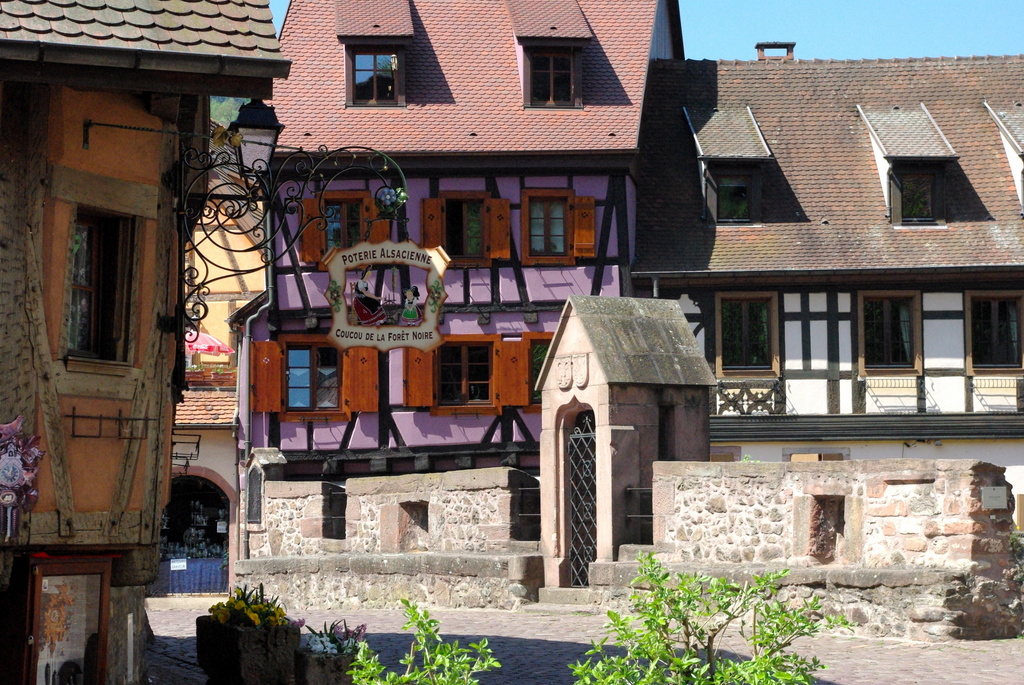
Black Forest sandstone
In Germany, it is perhaps difficult to know the origin of the sandstone used in the construction of buildings because the builders of the Rhine plain had access to two deposits:
- the Northern Vosges-Pfälzerwald
- the Black Forest
In general, all buildings on the right bank of the Rhine used the variegated sandstone of the Black Forest. This is particularly true of famous monuments:
Basel Cathedral (Switzerland)
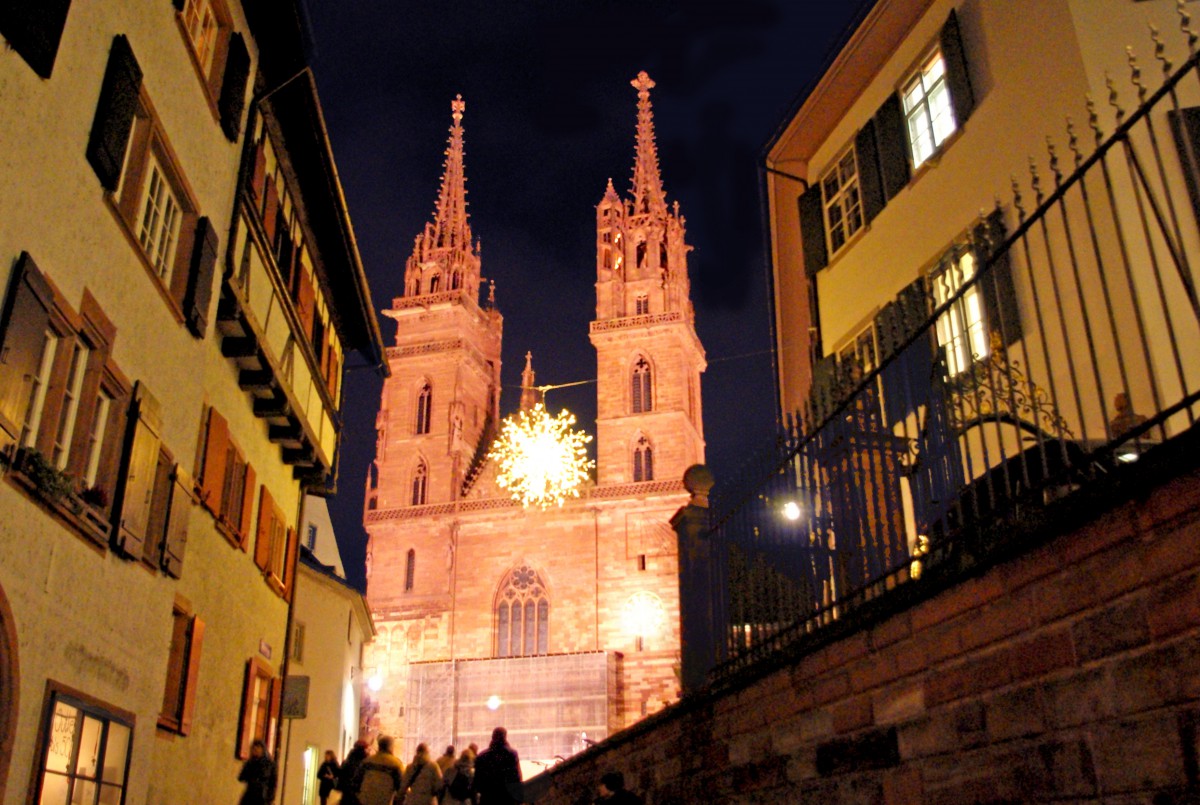
Basel City Hall (Switzerland)
![Basel's Renaissance town hall © GabrielleMerk - licence [CC BY-SA 4.0] from Wikimedia Commons](https://frenchmoments.eu/wp-content/uploads/2022/04/Basel-Rathaus-©-GabrielleMerk-licence-CC-BY-SA-4.0-from-Wikimedia-Commons.jpg)
Freiburg im Breisgau Cathedral
![General view of Freiburg im Breisgau and its cathedral © H. Helmlechner - licence [CC BY-SA 4.0] from Wikimedia Commons](https://frenchmoments.eu/wp-content/uploads/2022/04/Fribourg-en-Brisgau-Cathedrale-©-H.-Helmlechner-licence-CC-BY-SA-4.0-from-Wikimedia-Commons.jpg)
Rastatt Castle
![Rastatt Schloss © Gerd Eichmann - licence [CC BY-SA 4.0] from Wikimedia Commons](https://frenchmoments.eu/wp-content/uploads/2022/04/Rastatt-Schloss-©-Gerd-Eichmann-licence-CC-BY-SA-4.0-from-Wikimedia-Commons.jpg)
The Palace of the Prince-Bishops of Speyer in Bruchsal
![Bruchsal Schloss © Tilman2007 - licence [CC BY-SA 4.0] from Wikimedia Commons](https://frenchmoments.eu/wp-content/uploads/2022/04/Bruchsal-Schloss-©-Tilman2007-licence-CC-BY-SA-4.0-from-Wikimedia-Commons.jpg)
Heidelberg Castle
![Heidelberg Schloß © Pumuckel42 - licence [CC BY-SA 3.0] from Wikimedia Commons](https://frenchmoments.eu/wp-content/uploads/2022/04/Heidelberg-Schlos-©-Pumuckel42-licence-CC-BY-SA-3.0-from-Wikimedia-Commons.jpg)
Imperial Cathedral of Frankfurt am Main
![Frankfurt Imperial Cathedral © Mylius - licence [GFDL 1.2] from Wikimedia Commons](https://frenchmoments.eu/wp-content/uploads/2022/04/Cathedrale-de-Francfort-©-Mylius-licence-GFDL-1.2-from-Wikimedia-Commons-scaled.jpg)
Bonus: Vosges sandstone in Paris
To my knowledge, only one building in Paris has incorporated Vosges sandstone. It is the Sainte-Odile church (17th arrondissement), built to welcome the Alsatians of Paris. Completed in 1946, the building was designed entirely in reinforced concrete. However, its pinkish colour indicates the addition of fragments and slabs of Vosges sandstone on the façade.
![Sainte Odile Church Paris © Mbzt - licence [CC BY 3.0] from Wikimedia Commons](https://frenchmoments.eu/wp-content/uploads/2022/04/Eglise-Sainte-Odile-Paris-©-Mbzt-licence-CC-BY-3.0-from-Wikimedia-Commons.jpg)
Find out more about the pink Vosges sandstone
- Read this article in French on our blog Mon Grand-Est 🇫🇷
- The guide to Alsatian half-timbered houses
- Discover the historic region of Alsace
- The façade of Strasbourg Cathedral is made of Vosges sandstone!
- The Imperial Cathedral of Speyer, built with Palatinate sandstone [in French]
- Another construction stone used in Lorraine and Paris: the Euville stone
- The Jaumont stone: the golden stone of Metz
- The Wikipedia article on the Buntsandstein
The examples of constructions made of pink sandstone of the Vosges listed above represent only a tiny part of the existing buildings and edifices in Alsace and Lorraine. If you know of others that deserve to be mentioned in this article, write their name in the comments below!
Vosges sandstone on Pinterest
Pin on Pinterest for later!
